Brazil Photography and Travel Guide
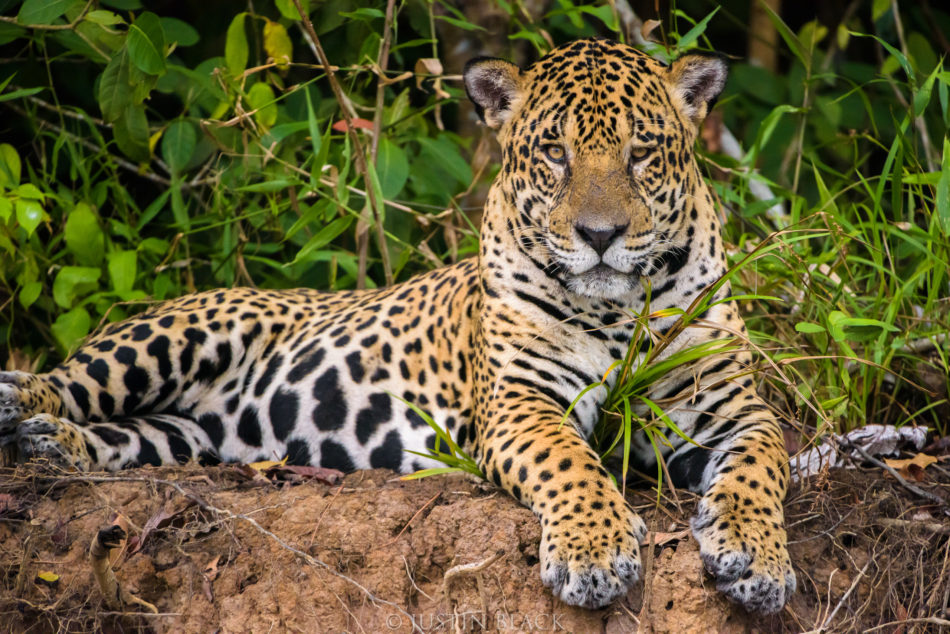
photo by Justin Black
National Geographic named the Pantanal, “Brazil’s Best Kept Secret,” because while most photographers have their eyes on the Amazon rainforest, the Pantanal truly has the most biodiversity.
The Pantanal is part national park, part UNESCO World Heritage site, and all a dream come true for landscape, nature, and wildlife photographers.
Plus, it’s huge at over 70,000 square miles. No wonder it’s Brazil’s best-kept secret! Even if you’ve visited the area before, you’ve probably barely begun.
While you’re planning your first trip to Brazil, don’t forget the Pantanal and don’t forget these tips and tricks to make the most of your time there.
What to Photograph in Brazil - Landscapes

Photo by Sébastien Goldberg on Unsplash
The Pantanal is the world’s largest freshwater wetlands, so it goes without saying that the landscapes here are breathtaking (and many are undiscovered). Because of the absence of roads, the Pantanal is both the landscape photographer’s best friend and worst enemy.
While there will be no people or manmade structures to obscure your views, there will also be a high chance of flooding and an even higher chance of not showering for a few days.
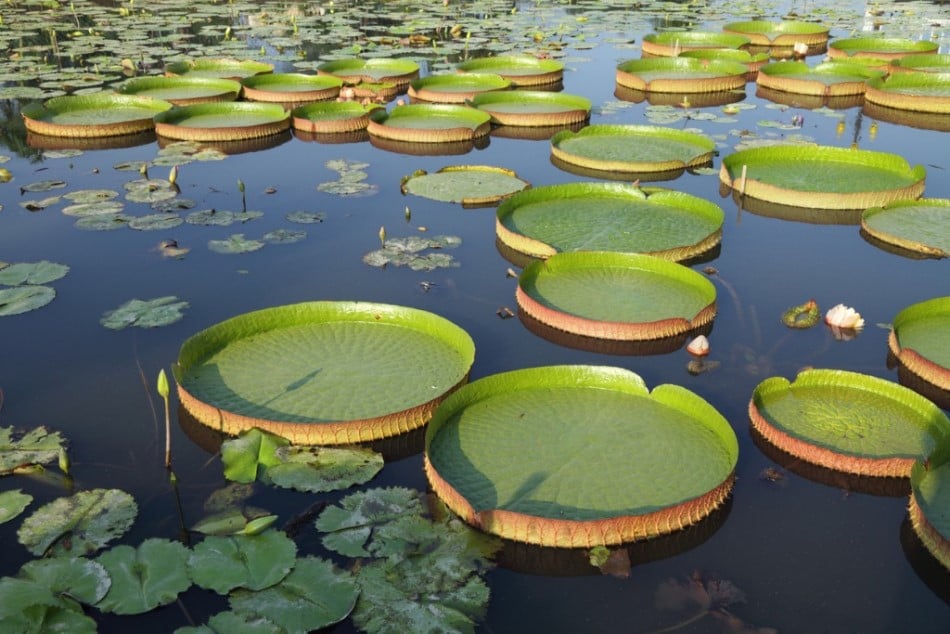
photo byVideowok_art via iStock
One of the prettiest landscapes in the Pantanal are the areas where giant lily pads lie in abundance.
Of course, while you’re out photographing these giant lily pads you will need to be hyper aware because anywhere there is water there are also caimans.
And it’s difficult to see them until you are almost on top of them. The hissing alone is enough to give you a heart attack!
What to Photograph in Brazil - Jaguars
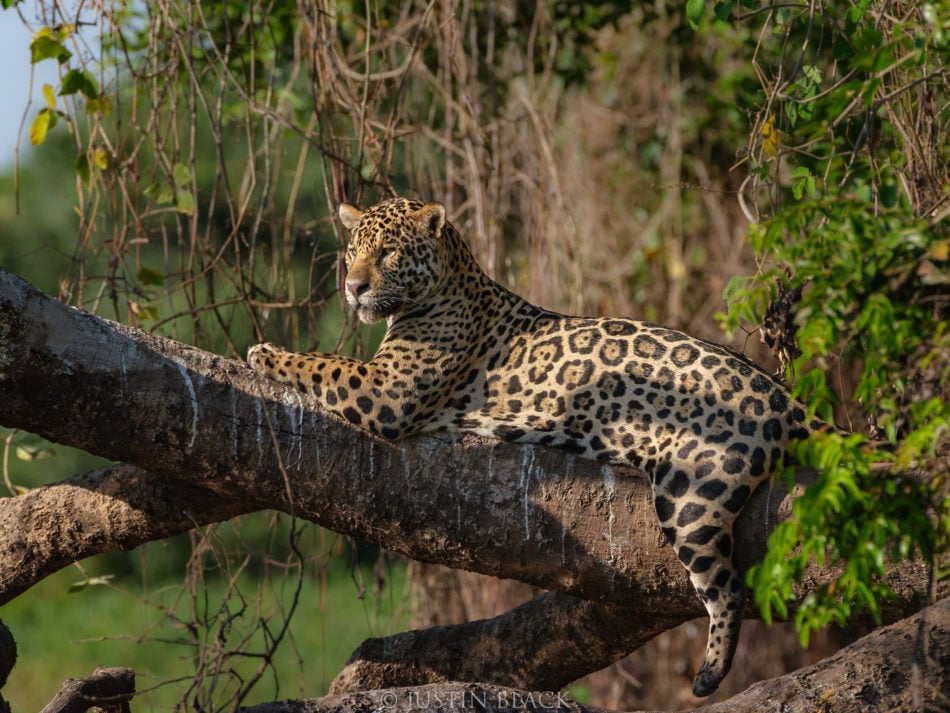
photo by Justin Black
The Pantanal’s biggest attraction is its abundance of jaguars. Jaguars are incredibly elusive in most parts of the world, considering there are only 64,000 of them in all of the Americas.
In the Pantanal there are 9 jaguars every 40 miles, the highest concentration anywhere in the world.
Plus, unlike the Amazon rainforest, the Pantanal is mostly open wetlands, so your chances of spying a jaguar are much higher. Imagine trying to photograph this through brown and black branches.
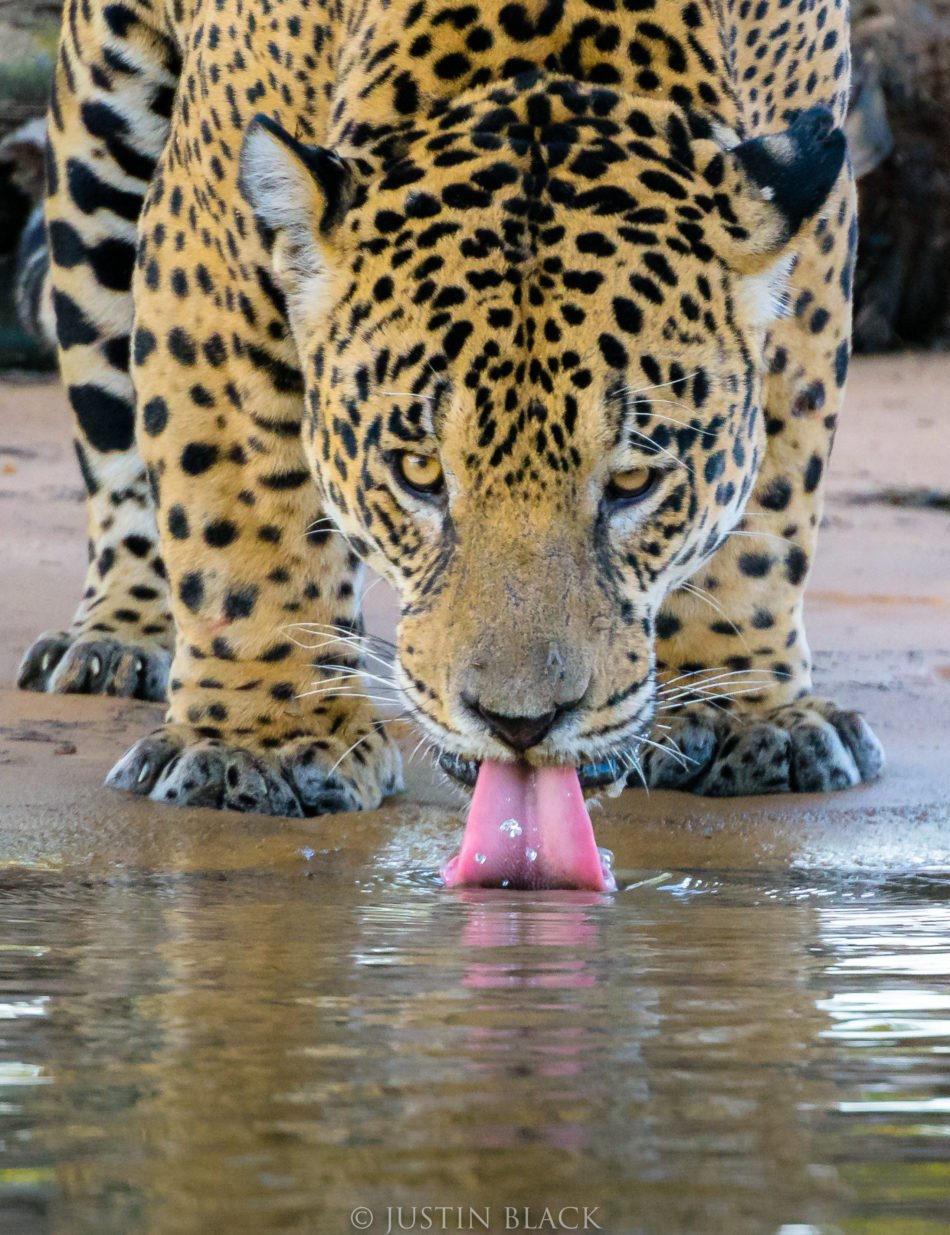
photo by Justin Black
While your chances of seeing a jaguar somewhere in the Pantanal are pretty high already, there are places where you are almost guaranteed to spot some jaguars.
The hotel Fazenda Santa Teresa, for example, has several wildlife observation towers. If you get up high, and if you get close to water, you will double your chances of the perfect shot.
If you are really serious about shooting jaguars on your trip, you will need to rent a boat or go on tour with a group that is planning on chartering one.
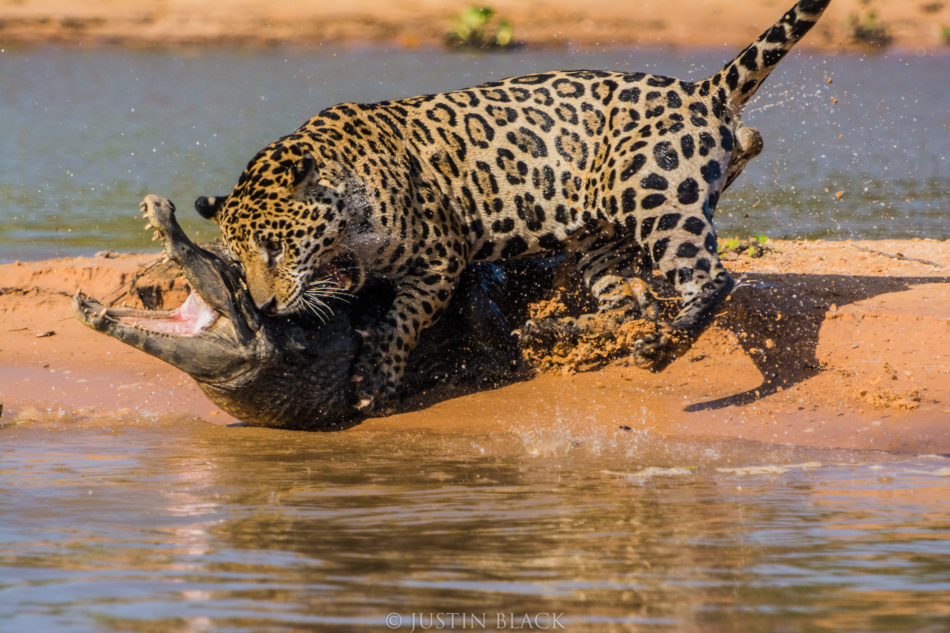
photo by Justin Black
The easiest place to photograph jaguars is along the water. This is where they come to drink and it is also where they hunt incredible beasts like caimans and capybaras.
It also helps your chances if you’re going to the Pantanal with an experienced host (more on that later).
What to Photograph in Brazil - Birds
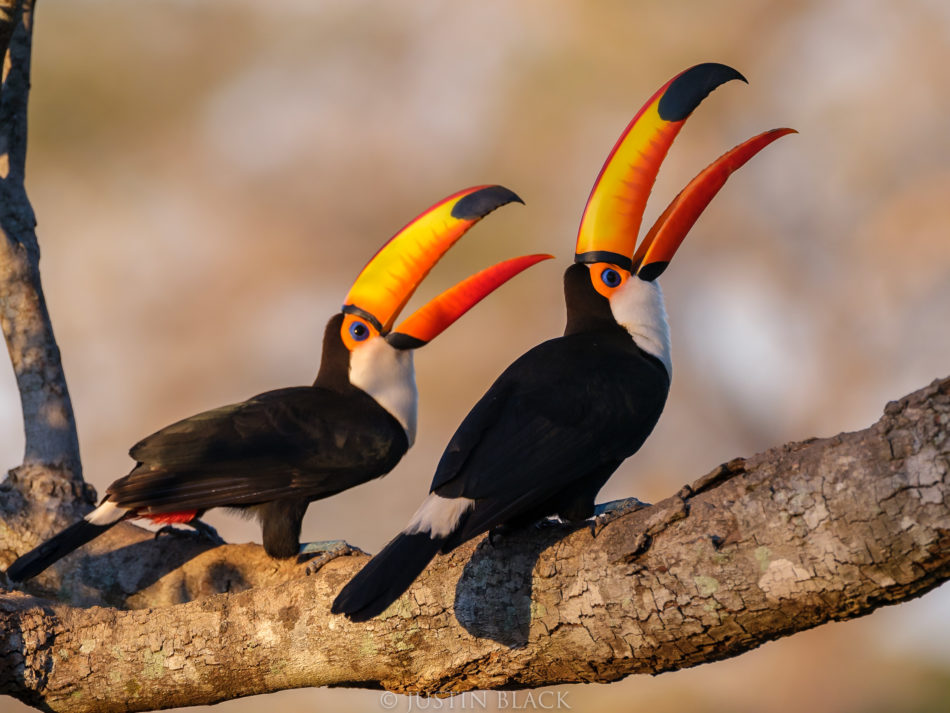
photo by Justin Black
The Pantanal is also known for housing nearly 377 (known) species of birds. It’s estimated that those 377 species probably make up about 81% of the area’s total bird species.
Among the birds you are bound to spot are toucans, parrots and herons. If you’re lucky, you can spot feeding frenzies of storks, ibis and jacanas.
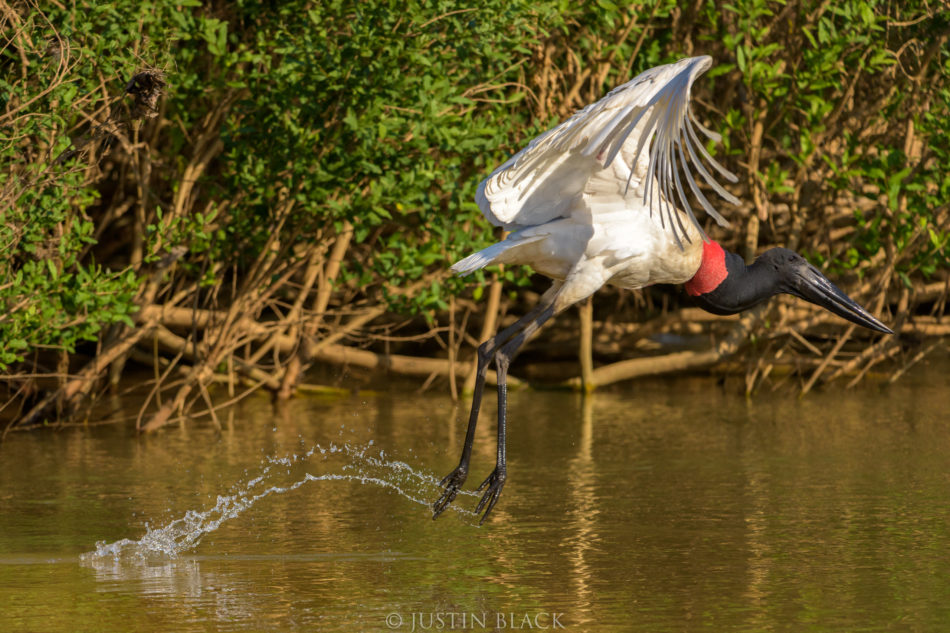
photo by Justin Black
If you venture deep enough into the Pantanal with your lodging choices, you can photograph birds right outside of your hotel room in the middle of the hot, sweaty days.
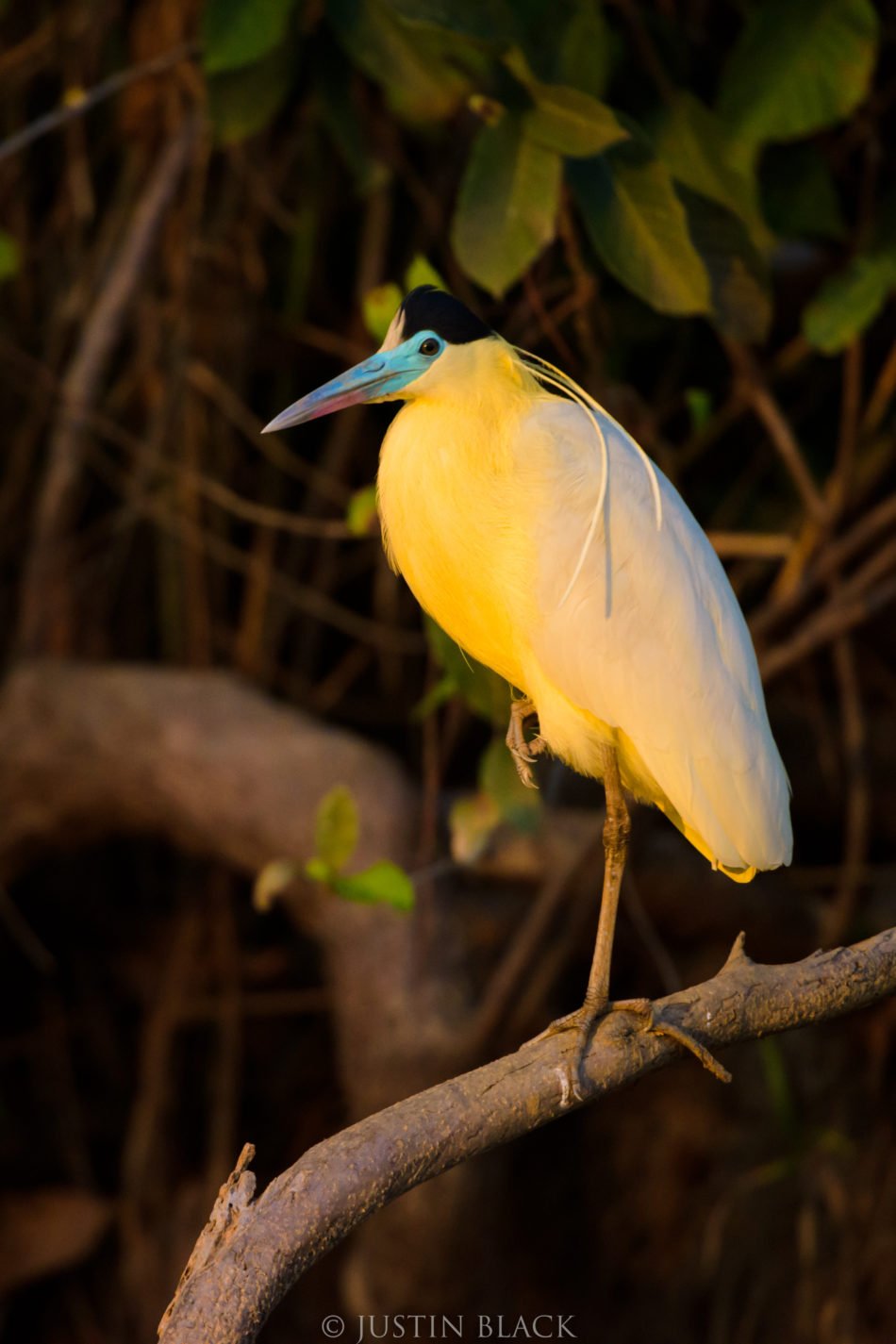
photo by Justin Black
It also helps to maximize your time in the Pantanal by staying in a variety of different lodges, so you are more likely to spot dozens of species instead of just the few that are nearest you.
How to Make the Most of Photographing Brazil
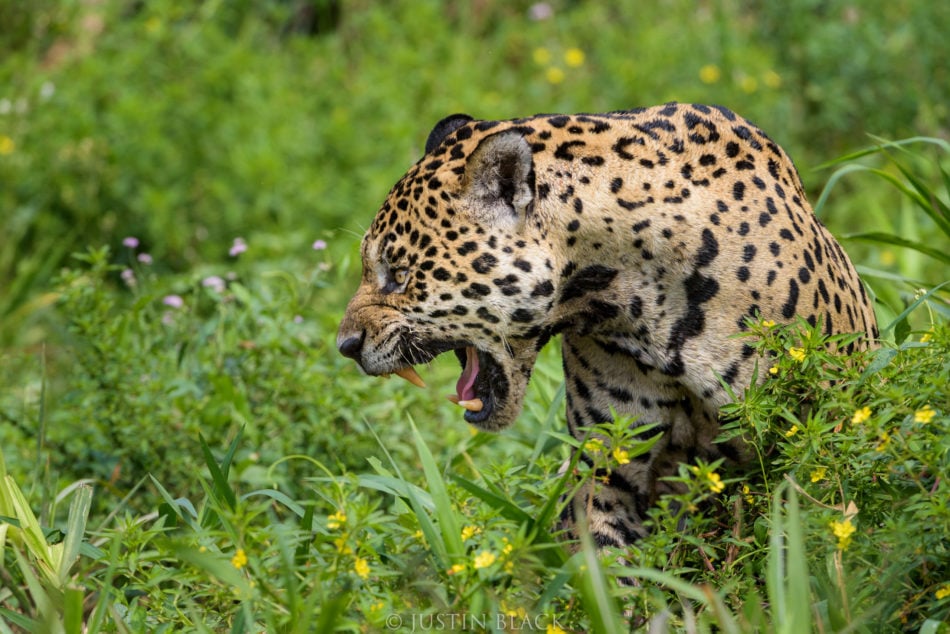
photo by Justin Black
I always say in order to make the best of a new travel destination you either need to do intense research or go with someone who has gone before.
Nobody knows the place best like a local, and nobody knows how to photograph the place best like a photography teacher.
Visionary Wild, a photography travel company, is hosting a Pantanal trip in 2020.
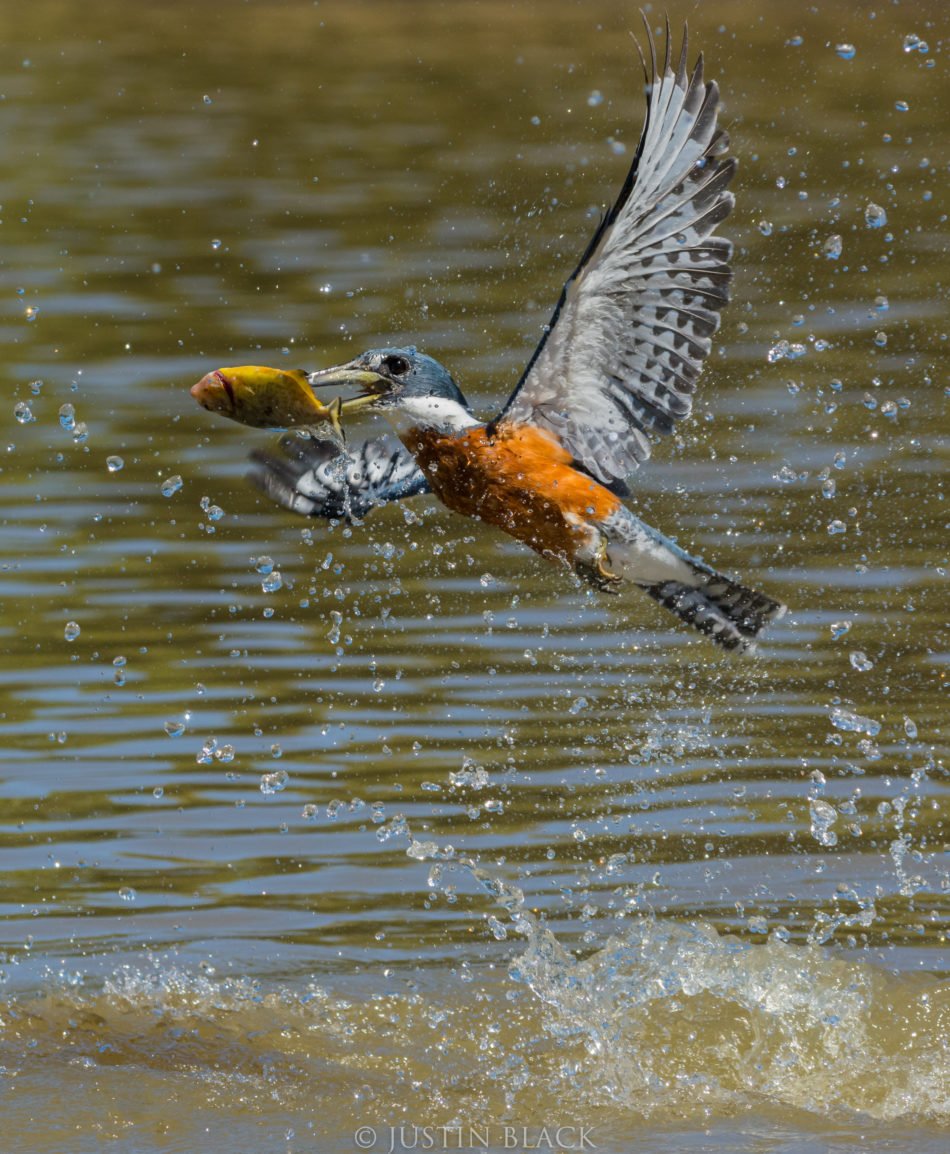
photo by Justin Black
This Pantanal trip will be the ninth trip with the company for the tour’s leader, Justin Black, so you can be sure all of your questions will be answered by someone who has had the same questions before.
The tour takes place from August 31 to September 10, 2020, and begins at around $10,000, which is a steal considering the number of locations you will be visiting.
Visionary Wild also isn’t like other photography travel companies because the tour guides are focused on active education throughout the trip.
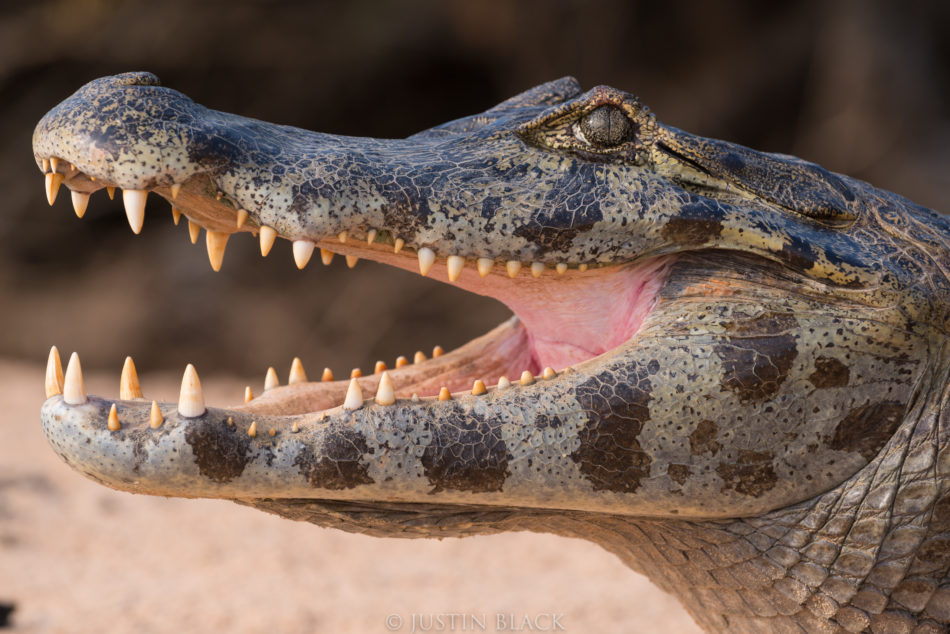
photo by Justin Black
While this education begins on the areas you will be staying and the flora and fauna you will be photographing, it also extends to the ways you are photographing these subjects.
You will be mentored one-on-one throughout the trip with your artistic expression as the focus. Sure, you will have your basic photography questions answered on any photography tour, but isn’t it better to be with a tour guide who can also help you convey the exact emotions you are trying to in your photos?
During Visionary Wild’s Pantanal trip you will stay in 3 different hotels and be able to focus on jaguars, landscapes, birds and a variety of other wildlife, all while networking with world-class photographers.
If that doesn’t sound like my ideal vacation, I don’t know what does!
We Recommend
California Photography and Travel Guide - Redwood Coast
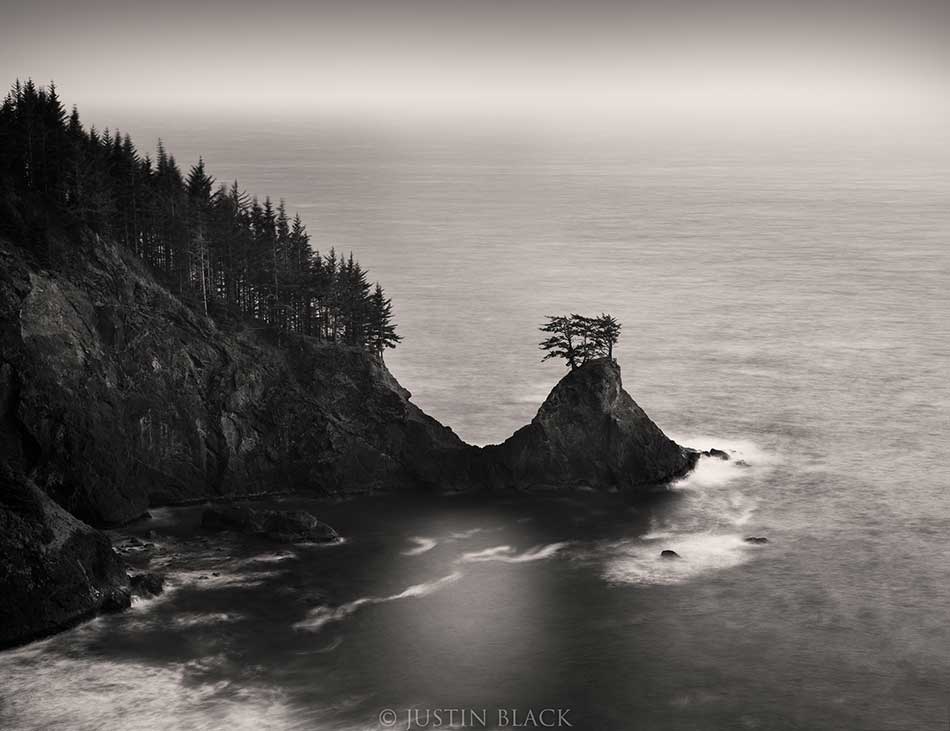
Photo by Justin Black
Few places in the world have the mystique and primordial beauty of California’s Redwood Coast.
This area is rich with photographic opportunities, from its signature trees to the carpet of rhododendrons that explode with blooms in early summer to the coast itself - a long and jagged playground of sea stacks, cliffs, and wild beaches.
One could spend weeks in this region and never see the same vista twice. But that begs the question, if you travel to the Redwood Coast, what are the must-photograph locations?
Below, I’ve outlined three Redwood Coast sights that you absolutely cannot miss on your visit.
What to Photograph on the Redwood Coast - The Redwoods!
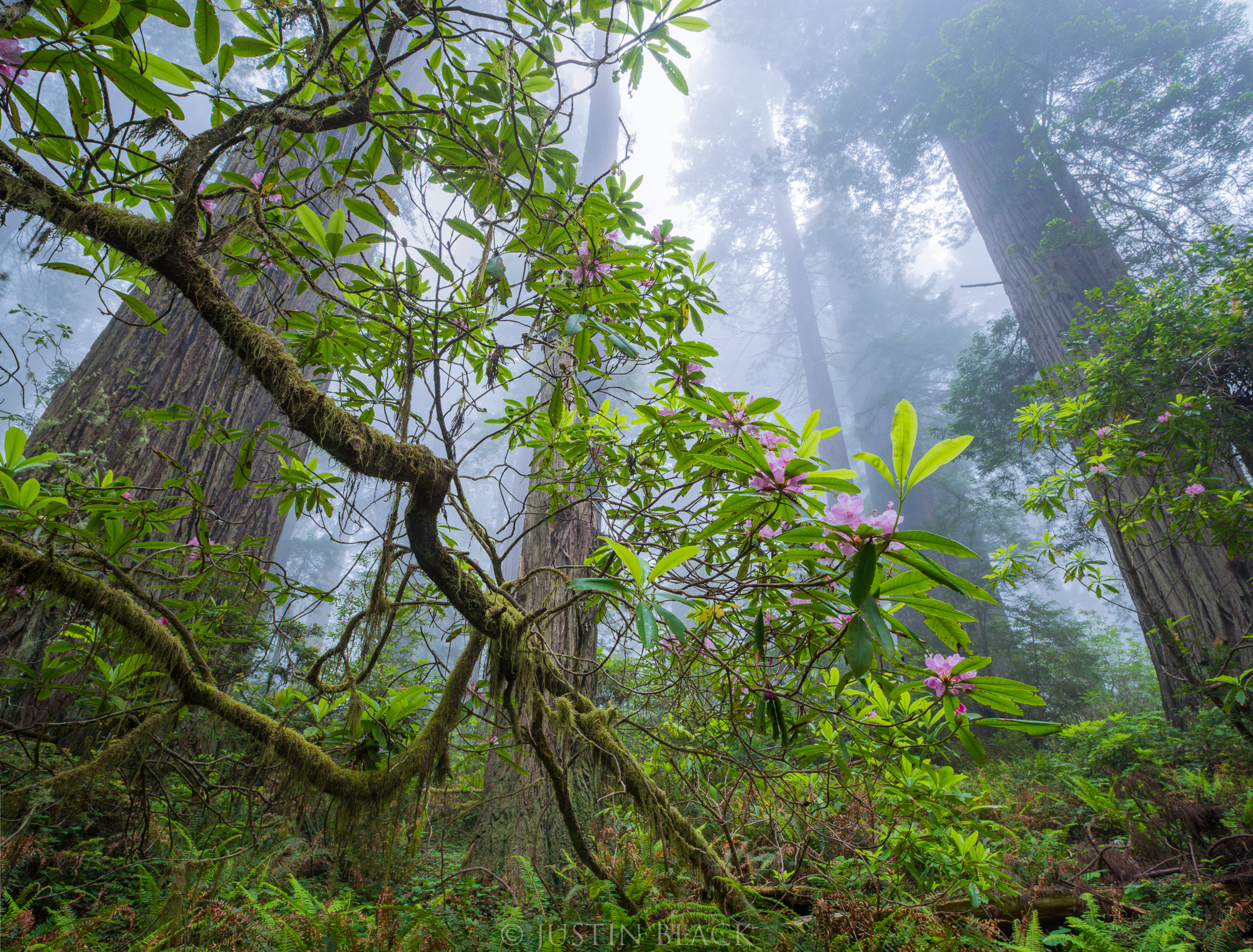 Photo by Justin Black
Photo by Justin Black
Clearly, the ancient redwood forests have to be on your list of things to photograph on your trip.
The redwoods along the coastal forest soar over 300 feet high, piercing the fog that rolls in each day. The quality of atmosphere and light photographs spectacularly well.
Opportunities are abundant to photograph these beautiful beasts from up close and afar. A can’t-miss location is the Avenue of the Giants, a 31-mile drive through the forest that puts the sheer size of the redwoods on full display.
On foot, you can explore the redwood forests from easy hiking paths in the Lady Bird Johnson Grove or in Prairie Creek Redwoods State Park, where the forest floor is covered in lush ferns.
The coastal view of the redwood forests (discussed below) is a can’t-miss sight as well!
What to Photograph on the Redwood Coast - Wild Rhododendrons
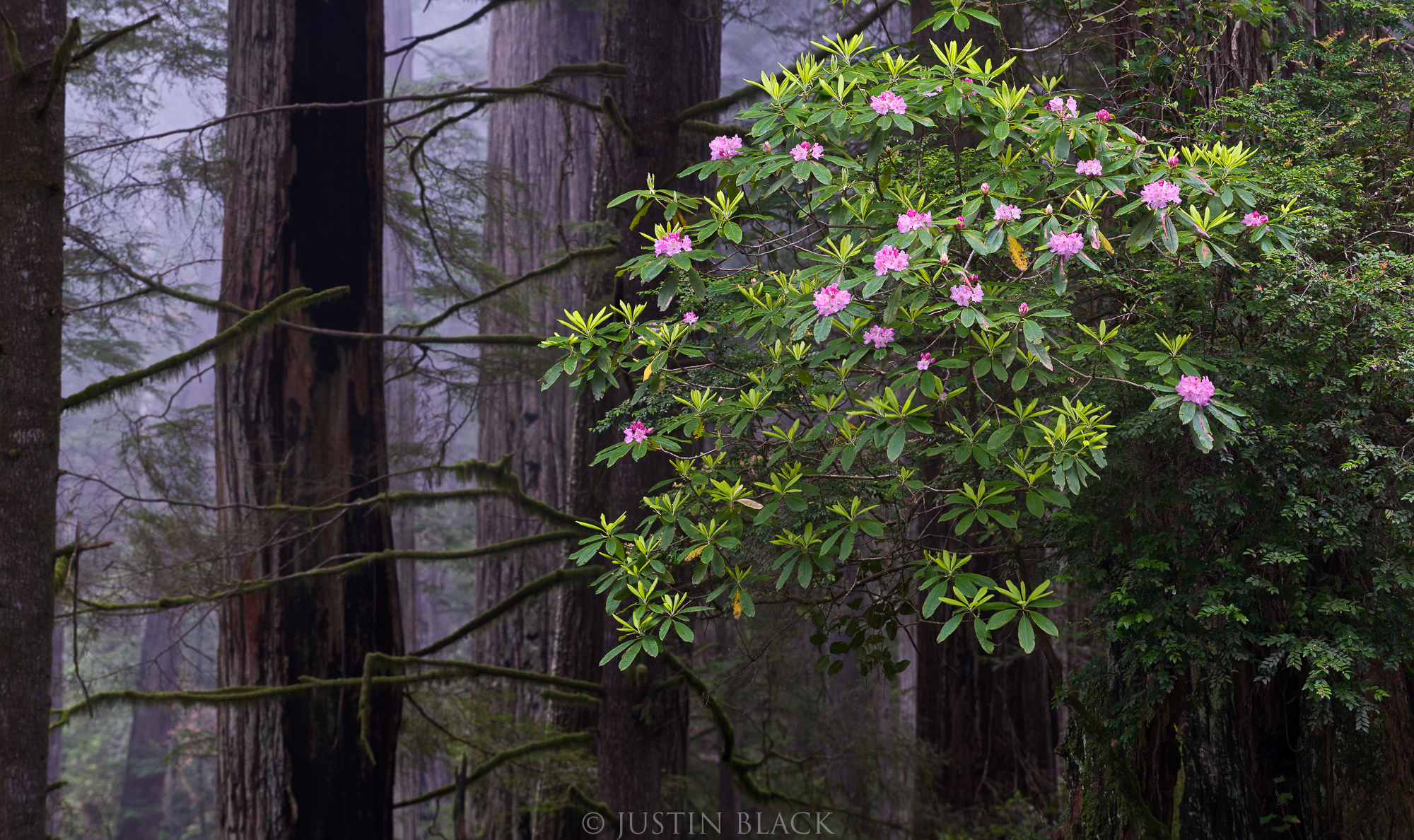 Photo by Justin Black
Photo by Justin Black
As impressive as the massive redwoods are, there’s something to be said for the chance to photograph a much more delicate subject on the Redwood Coast.
Nearly translucent, pink wild rhododendrons dot the redwood forest floor, a gorgeous juxtaposition to the hulking mass of the dark brown redwood trunks and their deep green needles.
If you time your trip just right in the early summer, you’ll be provided with the best opportunities to photograph wild rhododendrons as they reach their peak bloom. The Rhododendron Trail is a particularly excellent spot to view these blooms, and the light filtering through the forest canopy offers opportunities for truly dramatic images.
Quick Tip: Lupine can also found in abundance in early summer, their vertical plumes carpeting the hillsides. Take time to visit the Bald Hills, which has a history of some of the most spectacular lupine blooms in Northern California.
What to Photograph on the Redwood Coast - The Coast
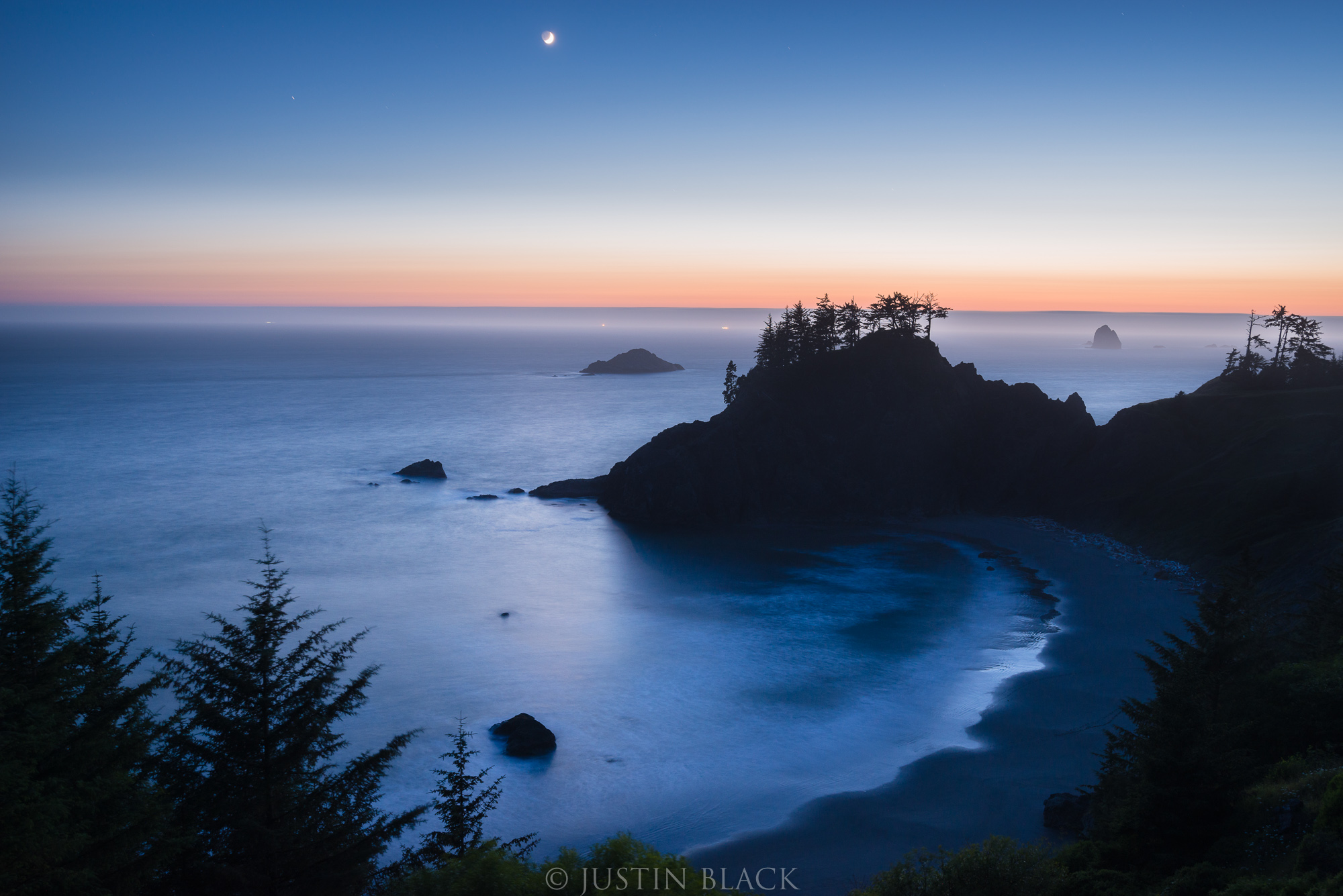 Photo by Justin Black
Photo by Justin Black
A visit to the Redwood Coast isn’t complete without taking some time to explore the spectacular coastline of Northern California and Southern Oregon.
Unlike the Southern California coast, which is known for its golden beaches, the Northern coast is far more rugged and wild.
Humboldt Lagoons State Park - a windswept area where the forest meets the sea - should be a prime target for your camera. If it’s a view of massive sea stacks dotting the coastline, Moonstone Beach County Park should be on your to-do list.
The combination of the jagged coast, soaring cliffs, quiet coves, and redwoods dotting the coastal mountains is simply breathtaking. Add in the opportunity to photograph these diverse landscapes amidst the fog and spectacular California sunsets, and you have a recipe for a photographic location that cannot be missed!
How to Make the Most of Photographing the Redwood Coast
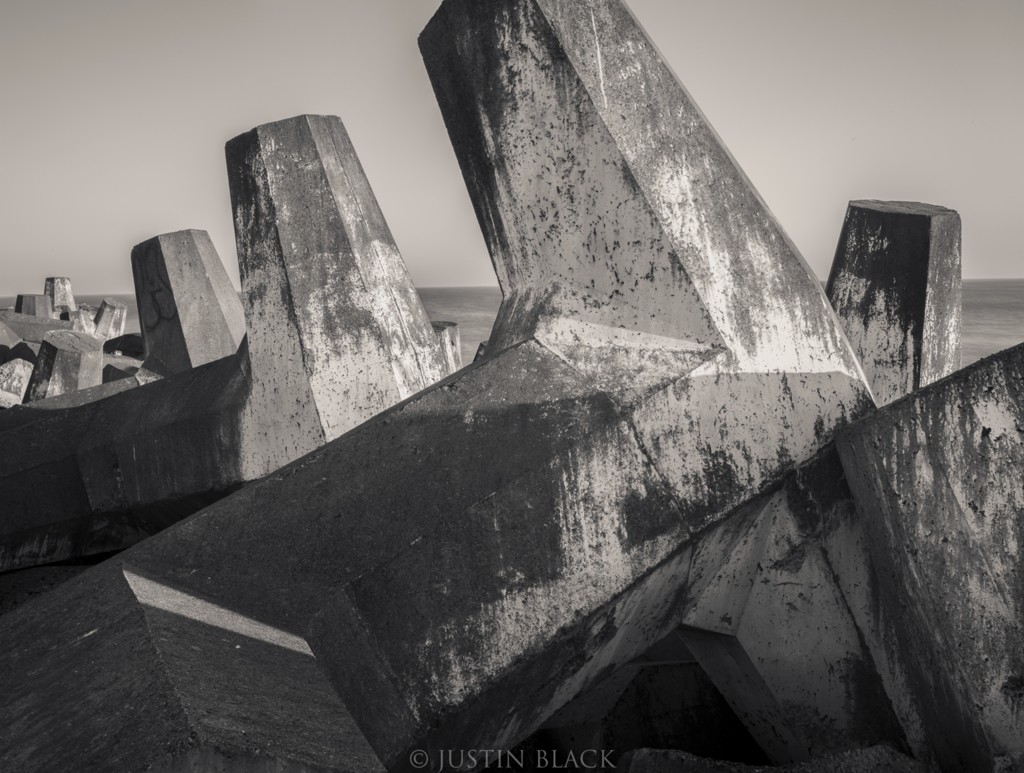 Photo by Justin Black
Photo by Justin Black
Like any gorgeous place ripe for photographers, the Redwood Coast offers so many possibilities that it can become a challenge to simply decide where to head with your camera.
That being the case, it’s best to explore this majestic area as part of a photography workshop.
Visionary Wild offers a Redwood Coast Workshop with master photographers Jack Dykinga, John Shaw, and Justin Black that will take you to some of the most stunning locations Northern California has to offer. But this isn’t just a photo tour with a few stops along the way to take photos...
Instead, Visionary Wild is dedicated to helping you achieve personal growth as a photographer. In a small-group setting (no more than 10 participants), you’ll get plenty of one-on-one time with the workshop leaders so you can get expert advice on how to improve composition, lighting, tonal control, your overall workflow, and much more.
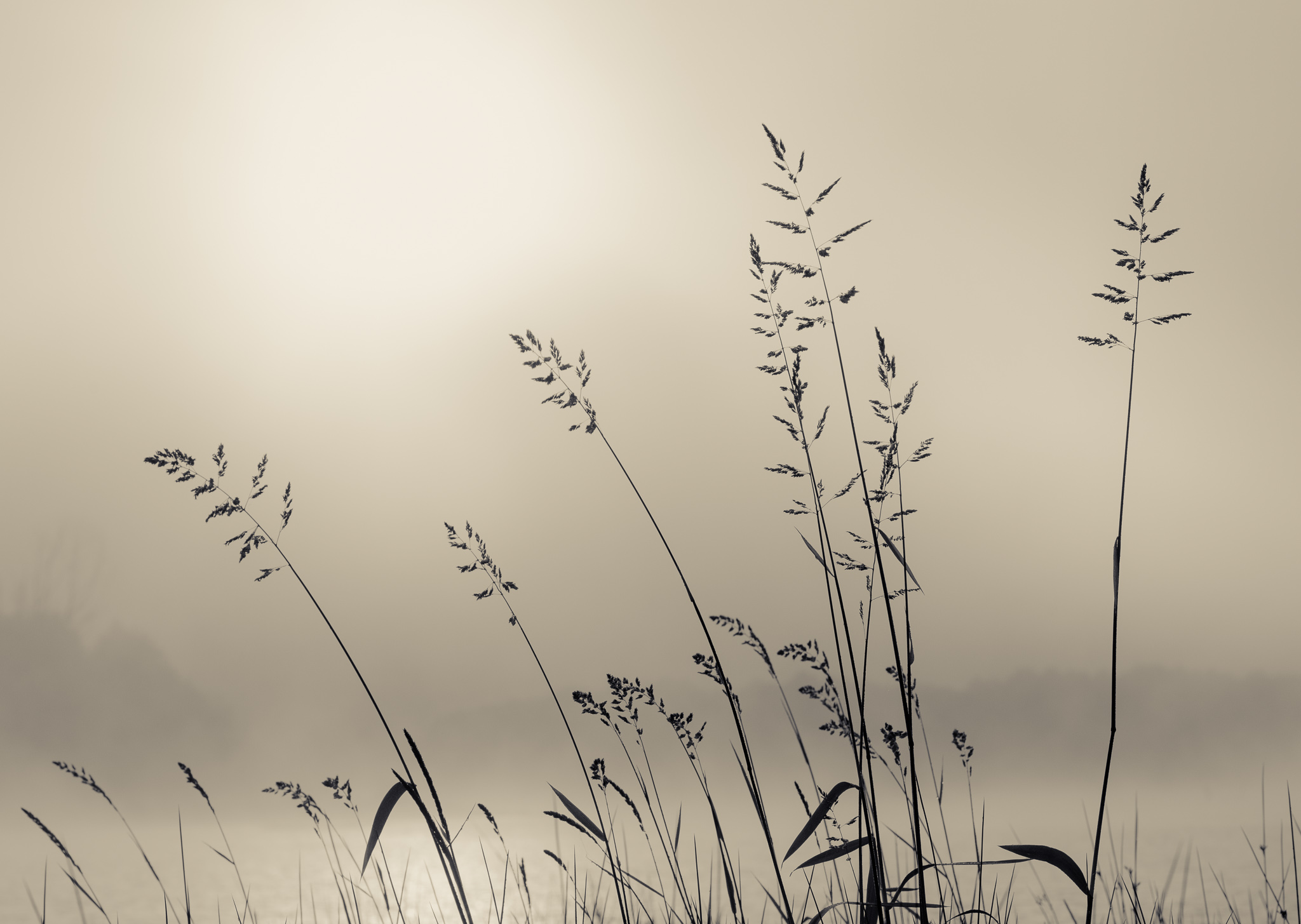 Photo by Justin Black
Photo by Justin Black
As part of the Redwood Coast Workshop, you’ll spend mornings and evenings exploring your outdoor classroom and capturing the beauty of the landscape under the warm glow of golden hour lighting.
During the day, you’ll join the workshop leaders for classroom sessions in which you dive deep into topics on advanced seeing, composition, creativity, and digital workflow. Critique sessions offer a chance to share your work with others and get constructive feedback on how you can maximize your potential behind the lens.
Dykinga, Shaw, and Black - each possess extensive experience exploring and photographing the Redwood Coast. Their insights, instruction, feedback, and support will help you build the strong foundation you need to reach your potential behind the lens.
Learn more about Visionary Wild
Planning Your Redwoods Photography Trip
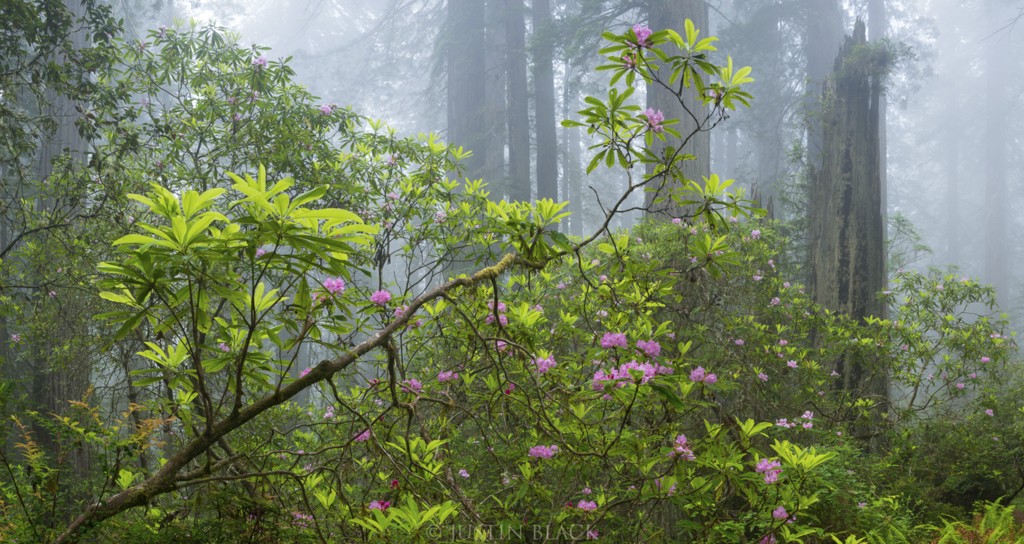 Photo by Justin Black
Photo by Justin Black
- Where to Stay: Ocean View Inn in Crescent City. The hotel is centrally located which makes day trips to various points along the Redwood Coast more manageable.
- Where to Eat: The Good Harvest Cafe is locally-owned and gets rave reviews for its American cuisine and seafood.
- Must-See Attractions: Battery Point Lighthouse, Oceanworld, and Beach Front Park are just a few attractions near Crescent City worth your time.
- Best luggage: For a trip of this length, the Nomatic Check-In roller bag is the ideal choice. It offers polycarbonate construction that stands up to the rigors of travel, silent wheels, low-profile handles, and a three-stage aluminum handle to fit your height. With space for 78 liters of gear, this bag has plenty of room for a 5-day trip or longer.
- Check the weather in the Redwoods area right now.
We Recommend
Namibia Photography and Travel Guide
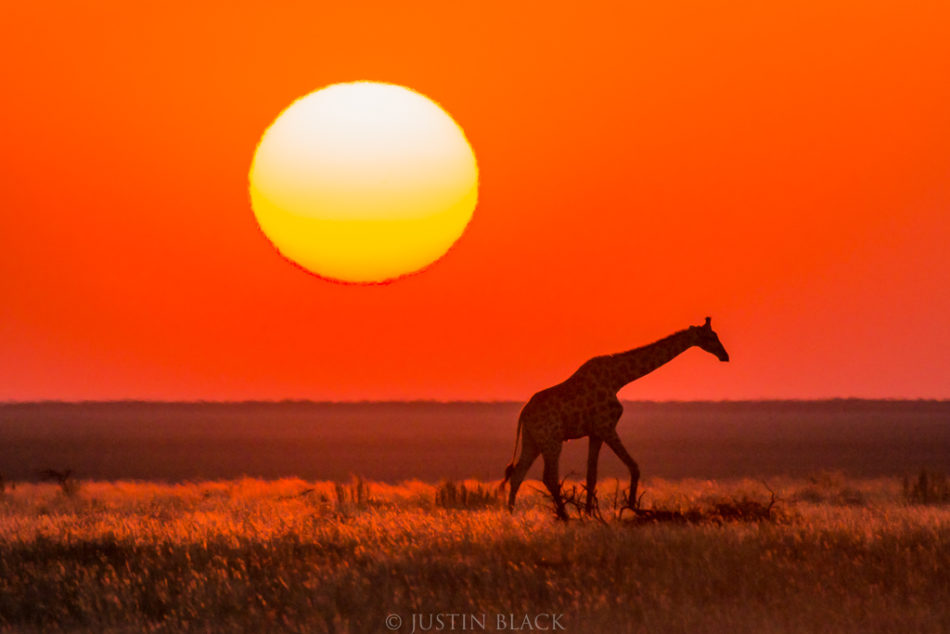
Image Credit: Justin Black
Namibia isn’t referred to as “Africa’s desert gem” for nothing.
It is a country of breathtaking beauty with awe-inspiring deserts with soaring dunes, plentiful wildlife, and abandoned ghost towns that serve as a reminder of how harsh desert life can be.
Namibia is home to some of the most incredible landscapes on earth as well, including the Skeleton Coast and Etosha National Park, both of which are must-sees for landscape photography enthusiasts.
Namibia is a place that can capture your heart, mind, and spirit, and when you travel there with your camera, you very well might not want to come back!
In this Namibia photography and travel guide learn about a few must-see locations and how to plan your Namibia trip to maximize your photographic opportunities.
Let’s get started!
What to Photograph in Namibia - Sossusvlei’s Thousand-Foot Dunes
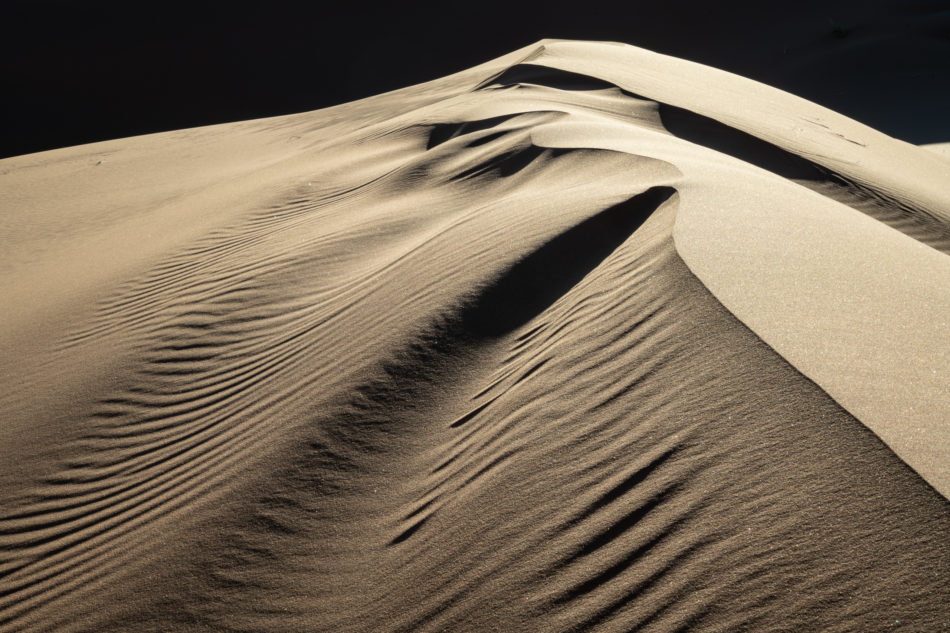
Image Credit: Eddie Soloway
The Sossusvlei region of Namibia is an interesting one, to say the least.
Located in Namibia’s Namib-Naukluft National Park, Sossusvlei is a salt and clay pan famous for its massive sand dunes.
The most interesting aspect of the dunes isn’t their height - some reach over 1,000 feet high - but instead it’s the colors of the sand that are the most fascinating.
You’ll find dunes that range from bright pink to dark orange, a variation that occurs because of oxidation (the sand has a very high iron content).
The longer the dunes have had to oxidize, the darker their coloring - old dunes are intensely red.
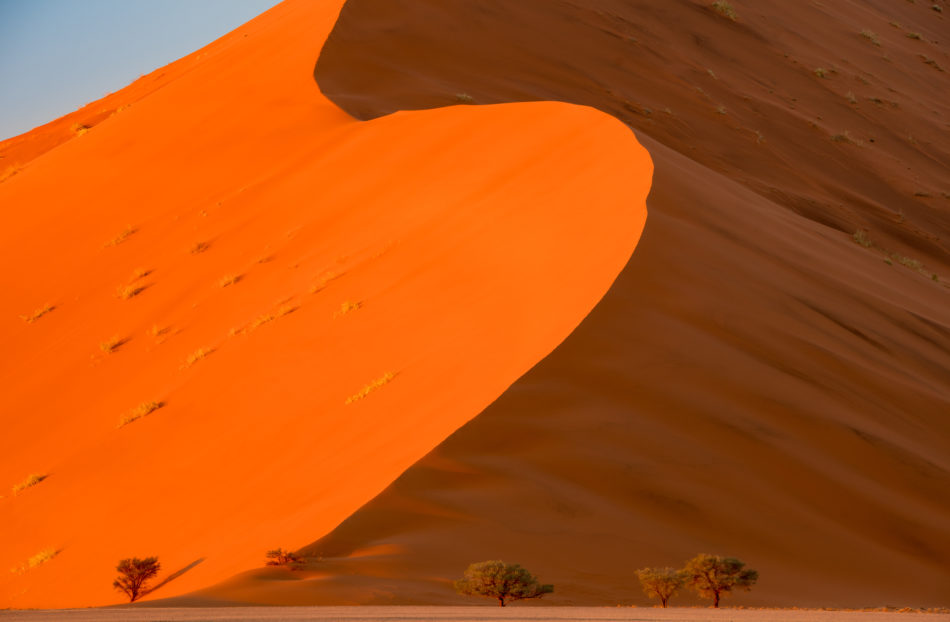
But the Sossusvlei region is much more than massive dunes...
Near the coast, the dunes give way to a completely different ecological zone, one with wetlands, lagoons, and mudflats.
Where the dunes harbor comparatively little life, their coastal neighbor is home to hundreds of thousands of birds and other animals that seek water, food, and shelter in the lagoons.
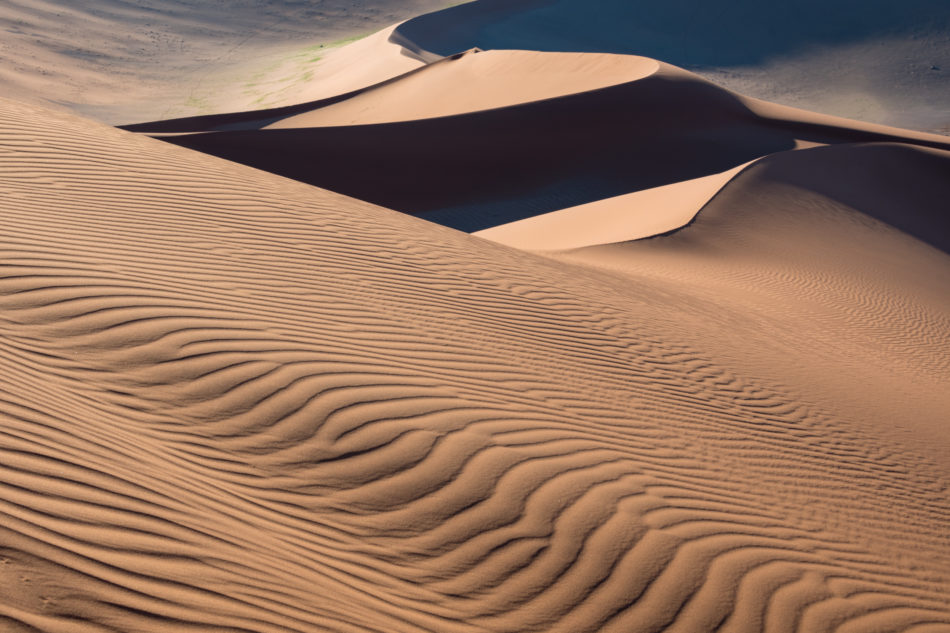
Quick Tip: Sidelighting is ideal for photographing dunes. As shown above, with the light entering the scene from the left, the right side of the dunes are cast in shadow to give the shot incredible contrast. What’s more, the sidelighting highlights the ripples in the sand created by the wind. The result is a photograph with incredible dimension!
What to Photograph in Namibia - The Wildlife of Etosha National Park
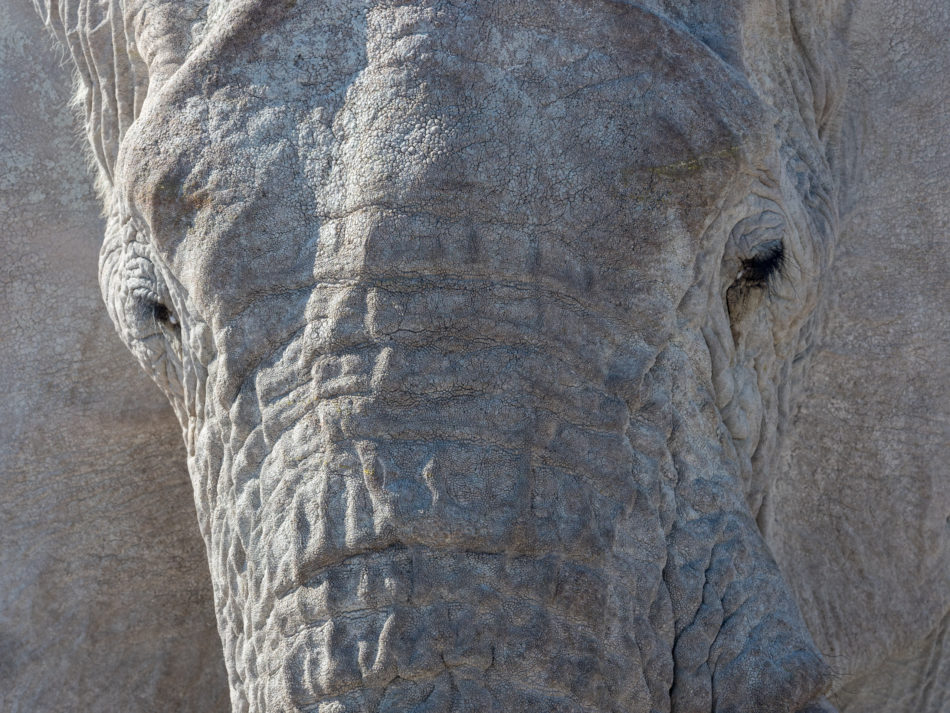
Considered the greatest wildlife sanctuary in Namibia, Etosha National Park is a must-see location if wildlife photography is on your agenda.
Though the majority of the park is a salt pan (which is so large it can be seen from space), wildlife from around Southern Africa migrates to the park’s many watering holes to satisfy their thirst.
To say that wildlife here is abundant is an understatement - you’re all but guaranteed to see game each time you venture out into the park, both because of the sheer number of animals and because the park is one of the most accessible reserves in all of Southern Africa.
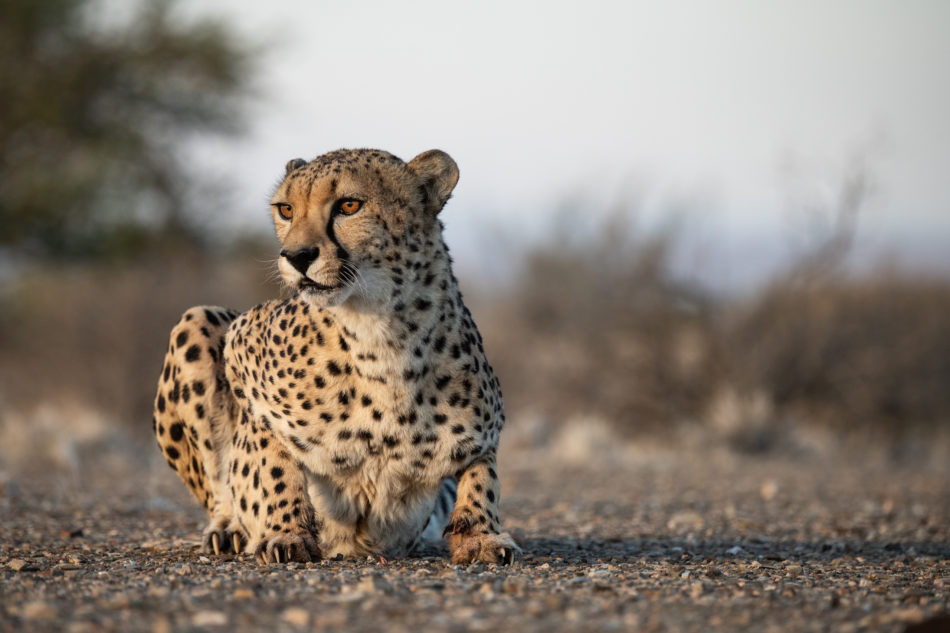
Image Credit: Eddie Soloway
The park offers a glimpse at both common and elusive wildlife species.
For example, elephants are found in large numbers, particularly in the areas of the park with thick vegetation. Lions, giraffes, and many common kinds of birds (all 340 species of them!) are easily spotted in many locations in the park.
At the same time, you can spot elusive leopards and the endangered black rhinos in the park, as well as the world’s largest bird, the ostrich, and the heaviest flying bird, the kori bustard.
Of course, the best time to visit this area is in the heat of the summer, when animals come from far and wide to find replenishment during the dry season.
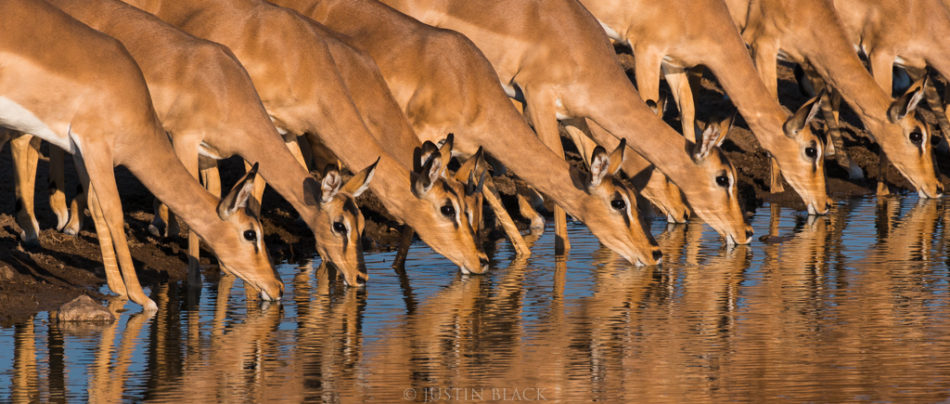
Image Credit: Justin Black
Quick Tip: At 8,598 square miles, Etosha National Park isn’t exactly small. As a result, plan for several days to explore its beauty. There are three main camps inside the park (Okaukuejo, Halali and Namutoni) that offer sleeping accommodations, restaurants, shops, and recreational opportunities. Deeper in the park are three more camps, Olifantsrus, which offers camping only, and Dolomite and Onkoshi, both of which offer safari-like experiences.
What to Photograph in Namibia Abandoned Ghost Towns
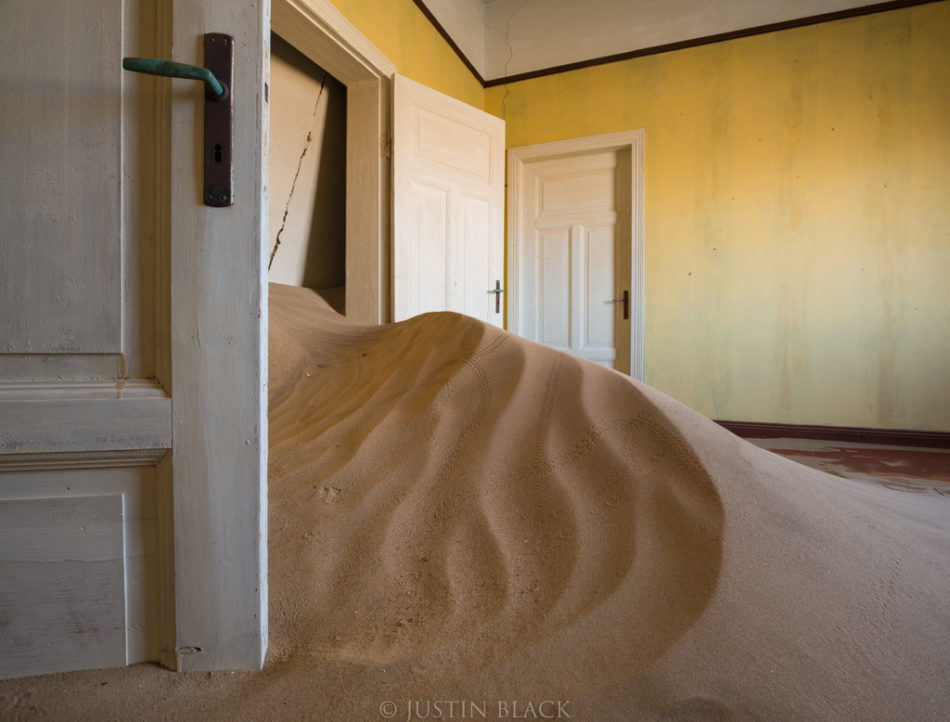
Image Credit: Justin Black
One of the most haunting scenes you’ll find in Namibia are its abandoned ghost towns that are slowly being reclaimed by the desert sands.
Kolmanskop, a once-bustling mining town, is a must-see. Its buildings still stand, but since the diamond mine there collapsed and its residents left, sand is overwhelming the buildings with dunes forming against their sides (and entering their doors and windows).
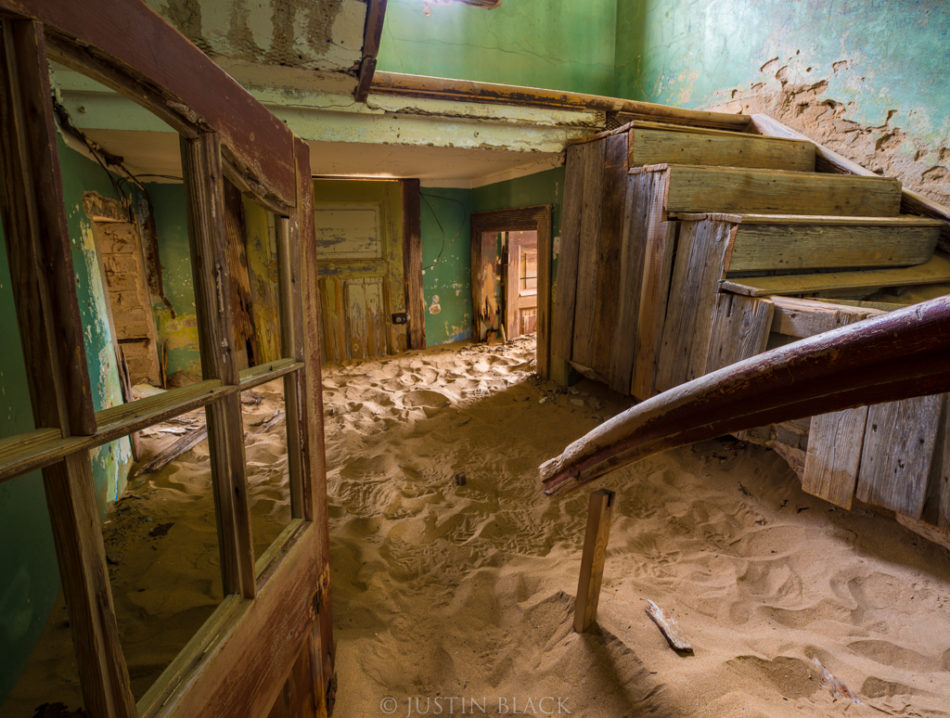
Image Credit: Justin Black
The town’s buildings bear the architectural style associated with German towns, thanks to the German control of the area in the early 20th Century after diamonds were discovered.
The dry climate has preserved the buildings, which are in shockingly good condition, apart from the knee-deep sand that now covers their floors.
Quick Tip: Elizabeth Bay is another abandoned mining town worth your time. Remains of the original town and mine still stand, though in the shadow of the new Elizabeth Bay Mine that opened in 1991 and is still in operation today.
How to Make the Most of Photographing Namibia
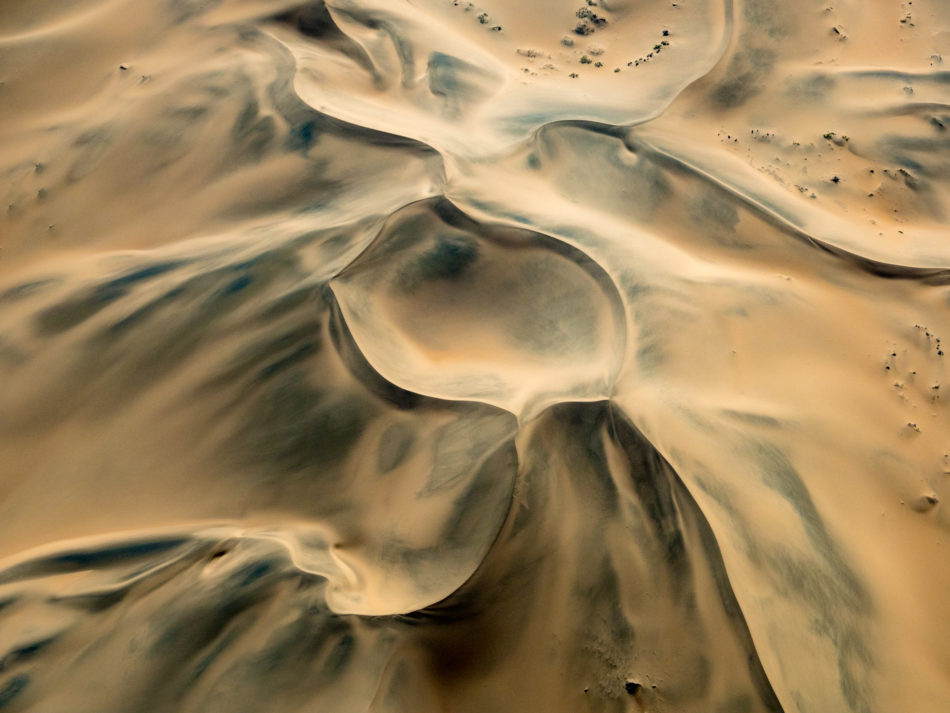
A photography trip to Namibia is on many people’s bucket list. So why don’t more people make the trek?
The primary difficulty with planning a photography trip to Namibia is simply determining where to go. With so many breathtaking sights and photo opportunities throughout the country, one could easily spend months there with a camera, yet most of us do not have that kind of time to do so!
It then becomes a difficult process of choosing the few locations you’ll get to see - a task that becomes doubly difficult after seeing photos of this impressive area. It’s simply so hard to decide.
That’s why traveling to Namibia as part of a photography tour makes so much sense…
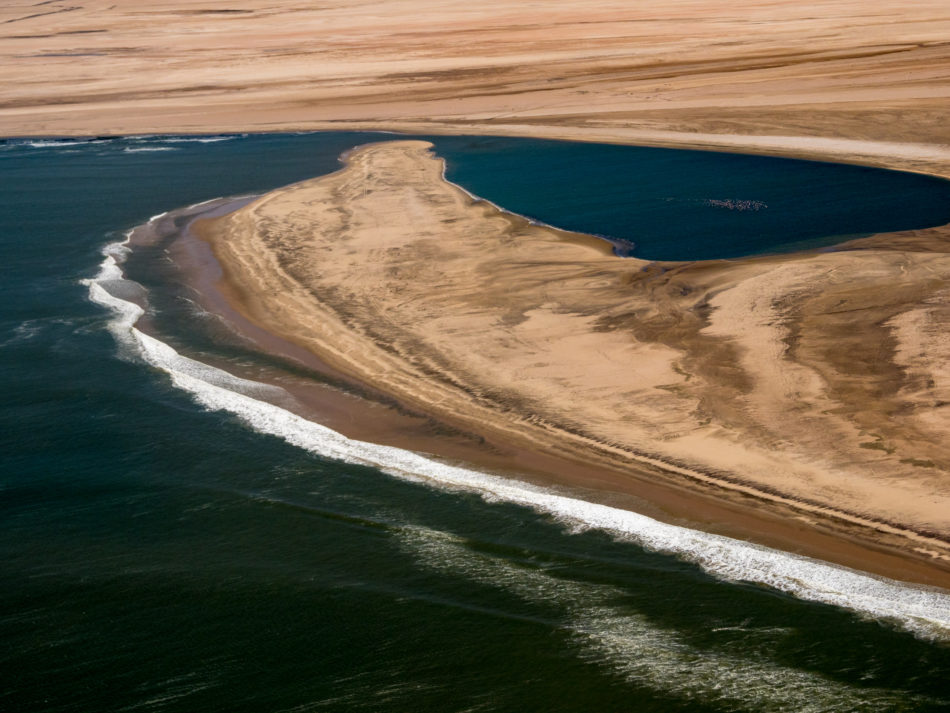
If you think about it, the hard parts are taken care of for you - creating an itinerary, determining when and where to go (and for how long), and arranging travel and accommodations in-country.
And, when you travel to Namibia with the likes of Visionary Wild, you’re led by world-renowned photographers Michael Melford and Eddie Soloway, both of whom have spent their fair share of time in Namibia.
That means that you get to learn from some of the best photographers in the world, but you also get to rely on their expertise to take you to iconic places and off-the-beaten-path areas that few tourists get to see.
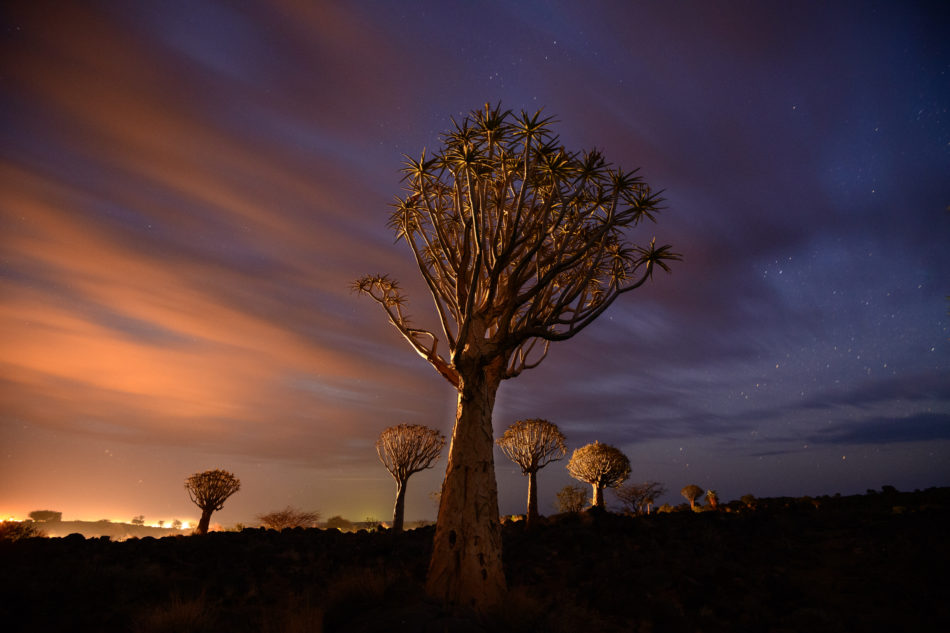
Visionary Wild’s Namibia expedition puts you in-country for two weeks (June 21-July 4, 2020). During that time, you’ll get to explore each of the locations described above, as well as many other photography hot spots in Namibia, including:
- The Quiver Tree Forest, where centuries-old trees and dolerite rock formations comprise the Giants Playground.
- Lüderitz, a mining ghost town that serves as an interesting relic of 19th and 20th Century German imperial aspirations.
- Swakopmund and Walvis Bay, two bustling cities on Namibia’s Skeleton Coast, which is named as such due to the large number of whales that have been stranded there, their skeletons still dotting the shore (which you can see from your private scenic airplane flight over the coast).
- Damaraland, a stunning landscape that’s home to the Brandberg, Namibia’s highest mountain, a millions-year-old petrified forest, and Twyfelfontein, a rocky outcropping that features thousands of engravings by Namibian bushmen.
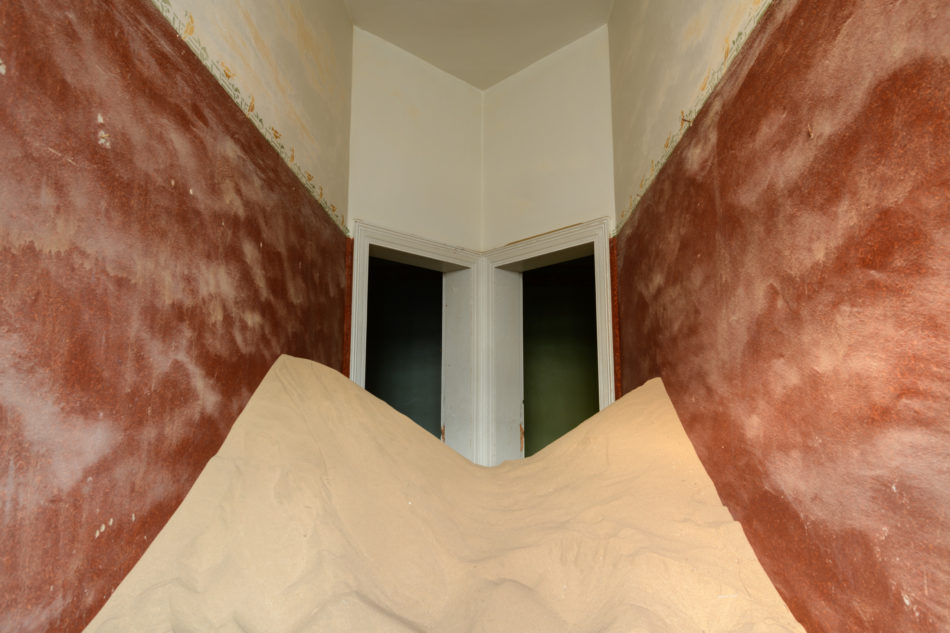
It’s an itinerary chock-full of adventure, but in amongst all that adventure, you get plenty of opportunities to learn more about photography and hone your skills behind the lens.
And since the expedition is limited to just six participants, the instructor-to-student ratio is just 3:1. That gives you ample time to get one-on-one instruction that will truly help you achieve your potential as a photographer.
There is truly no better way to experience Namibia and learn how to become a more skilled photographer than a small group photography expedition.
To learn more about Visionary Wild’s Namibia expedition, click here.
Other Tips for Planning a Namibia Photography Trip
- Where to fly into: Most international flights arrive at Hosea Kutako International Airport.
- Best luggage: For a trip of this length, the Nomatic Check-In roller bag is the ideal choice. It offers polycarbonate construction that stands up to the rigors of travel, silent wheels, low-profile handles, and a three-stage aluminum handle to fit your height. With space for 78 liters of gear, this bag has plenty of room for a 5-day trip or longer.
- Attractions & Things to Do: Take time out to explore the wildlife in Namibia's sand dunes. A stop in the coastal town of Swakopmund should be on your list of things to do as well. There, you can enjoy cool ocean breezes and visits with the friendly locals.
- Best Time of Year to Visit: Summer to early fall is the prime travel season to Namibia. Wildlife is extremely active during this time and the chances of rain are low.
- Check the weather in Namibia right now.
We Recommend
Oregon Photography and Travel Guide - Oregon Coast
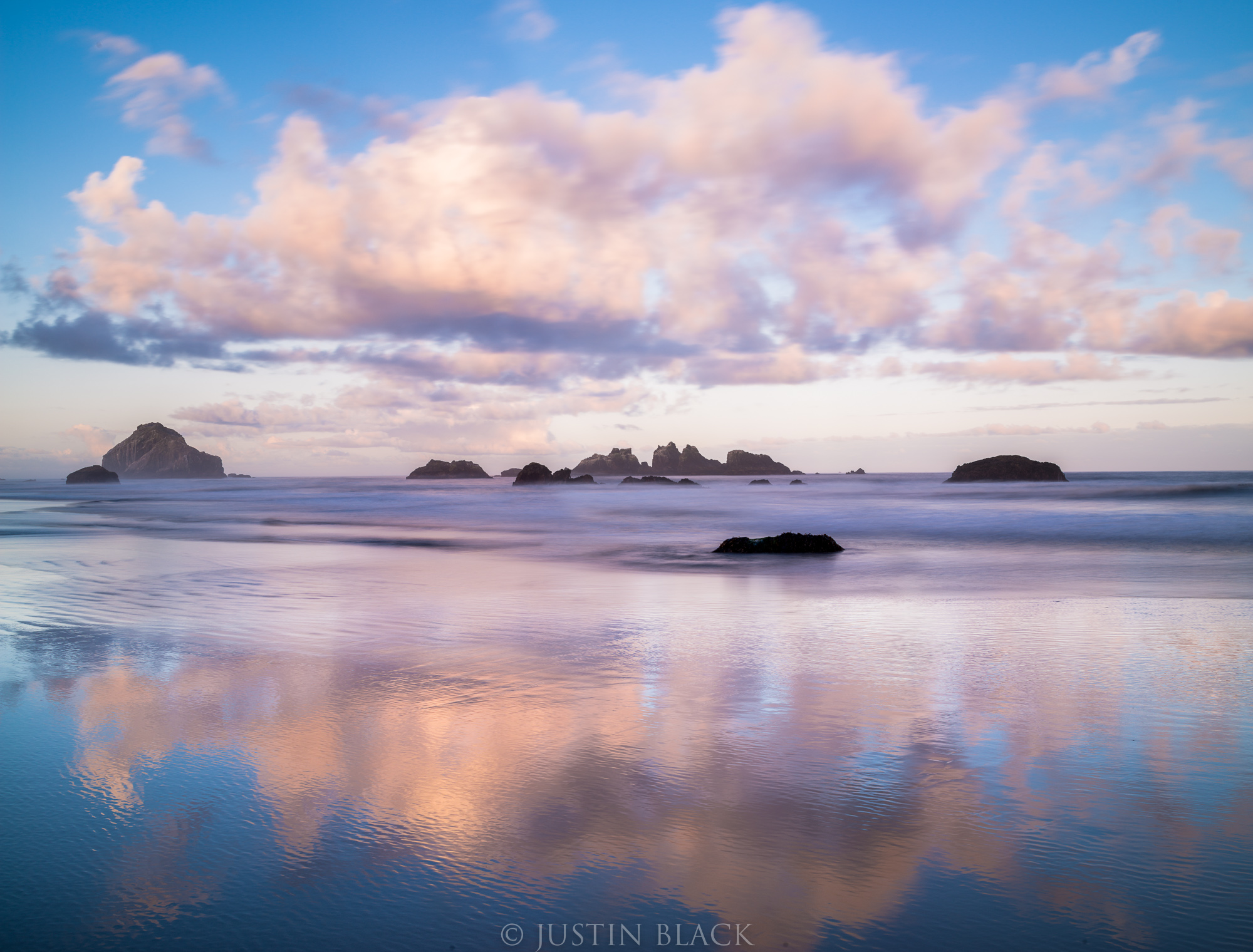
Just the other day, we explored the photographic opportunities on California’s Redwood Coast.
While some would say the Northern California Coast and the Southern Oregon Coast are cut from the same cloth, the two offer distinct reasons why they should be on your photography bucket list.
Where the Redwood Coast’s appeal is in its forests and rugged shoreline, Oregon offers more wide-open spaces and miles and miles of open beach where you can photograph tide pools, sea stacks, lighthouses, and more.
Let’s examine a few of the Oregon Coast’s photography hotspots that are worthy of your time.
What to Photograph on the Oregon Coast - Sunsets
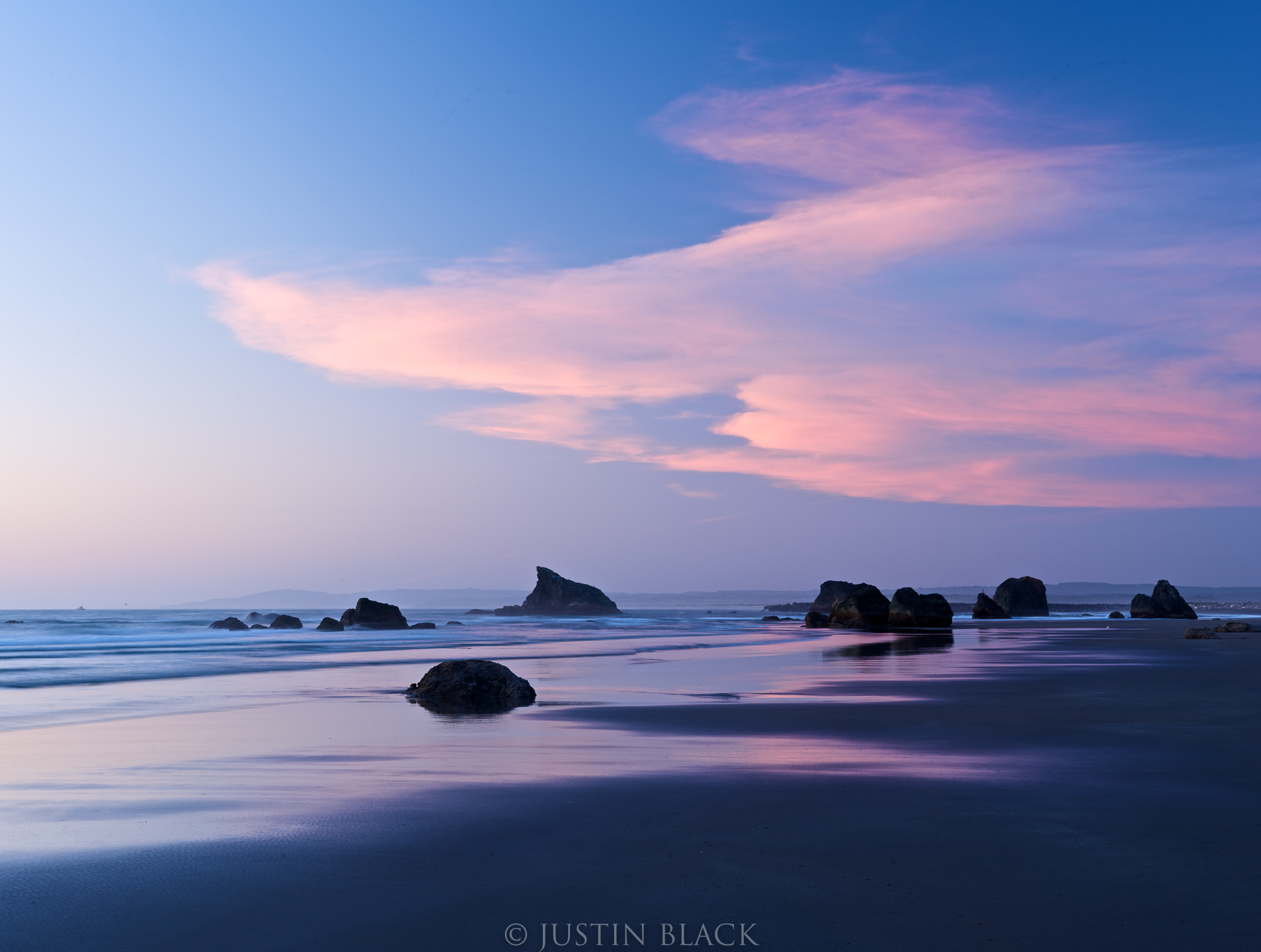
Given that there are miles and miles of open beaches along the Oregon Coast, it represents an ideal opportunity to photograph spectacular sunsets.
The beaches in the Bandon area, in particular, are a photographer’s playground given their size, accessibility, and the presence of sea stacks and other rock formations jutting out of the ocean’s waters.
The pastel colors of the sunset cast alongside the deep blues of the atmosphere is a gorgeous combination of colors, particularly when they’re reflected in shallow waters and wet sand of the beach.
When shooting at sunset, get there early and stay late. The light changes so rapidly that you can capture images of the same location that have many different moods and personalities.
What to Photograph on the Oregon Coast - Sea Stacks
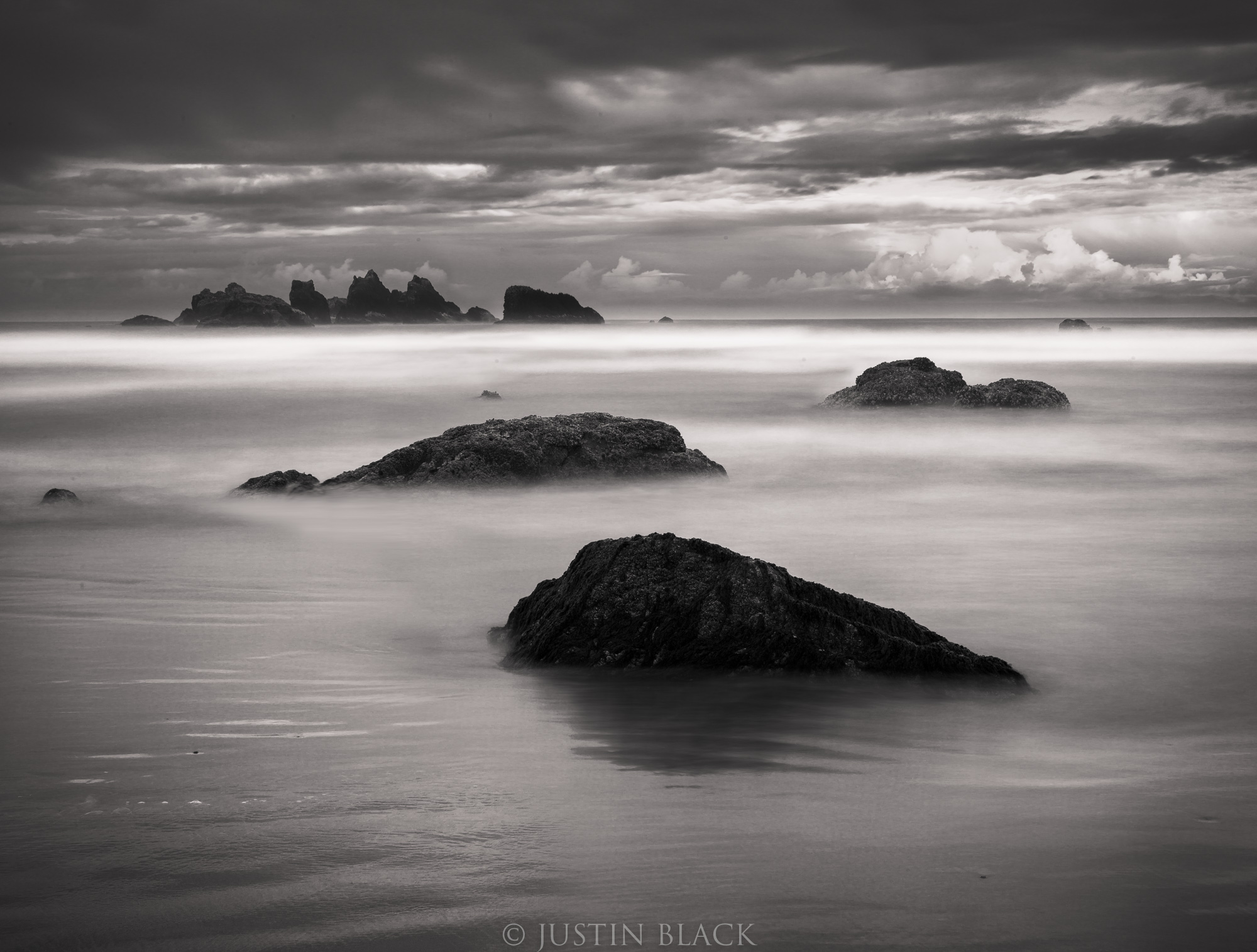
If you want to feature sea stacks in your photos, Face Rock State Scenic Viewpoint won’t disappoint. The area also has easily accessible beaches and intertidal areas you can explore at low tide.
The rugged shapes of sea stacks offer an interesting visual contrast to the softer elements you’ll find along the Oregon Coast, like smooth beaches, rolling waves, and windswept clouds.
This juxtaposition of hard and soft is an excellent subject for black and white photos, in which shapes, textures, lines, and contrast take on added visual importance in the absence of color.
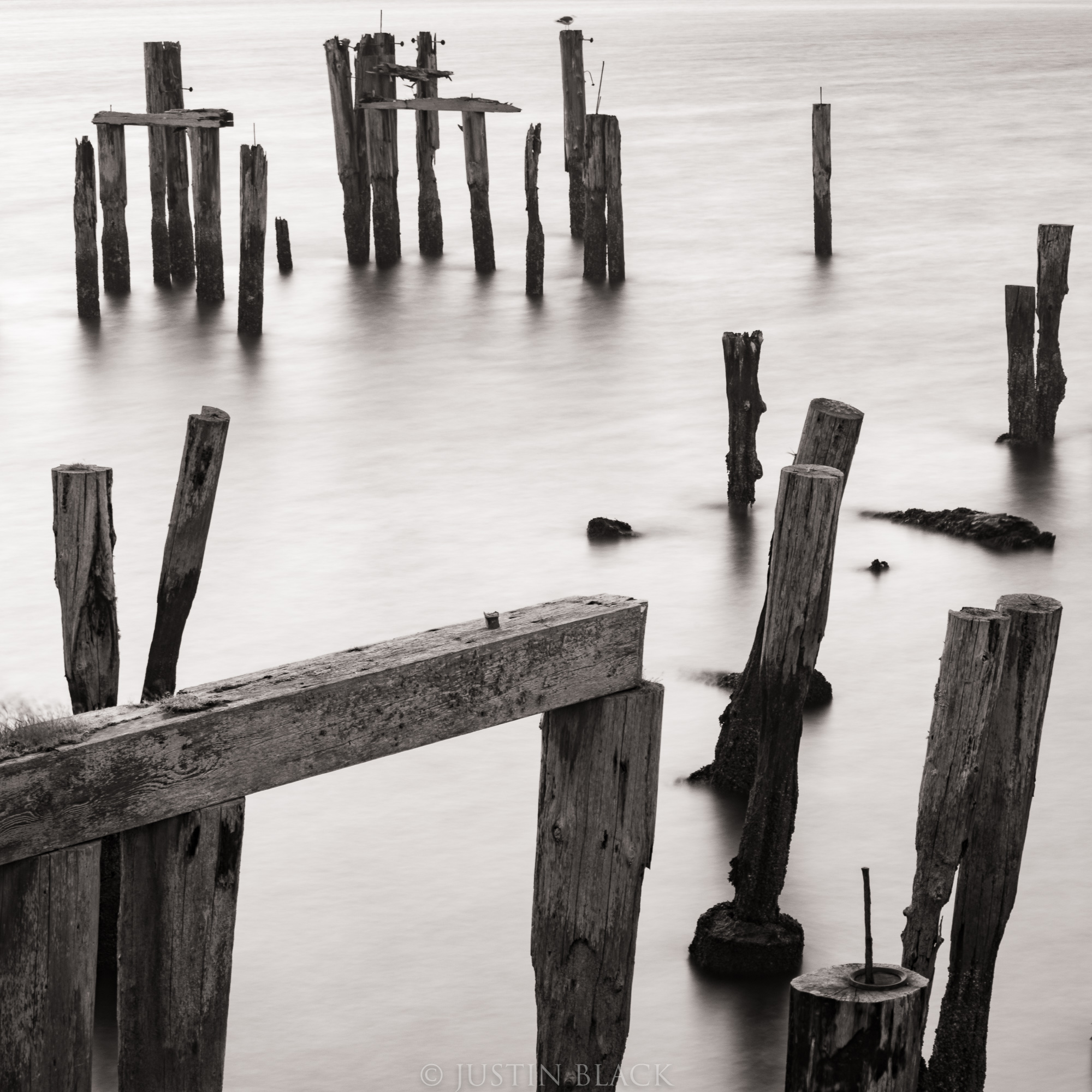
Quick Tip: Manmade elements like decaying ships or the remnants of an old pier are also excellent subjects for making black and white photos. Above, the linear lines of the old pier contrast beautifully with the smooth water.
What to Photograph on the Oregon Coast - Movement
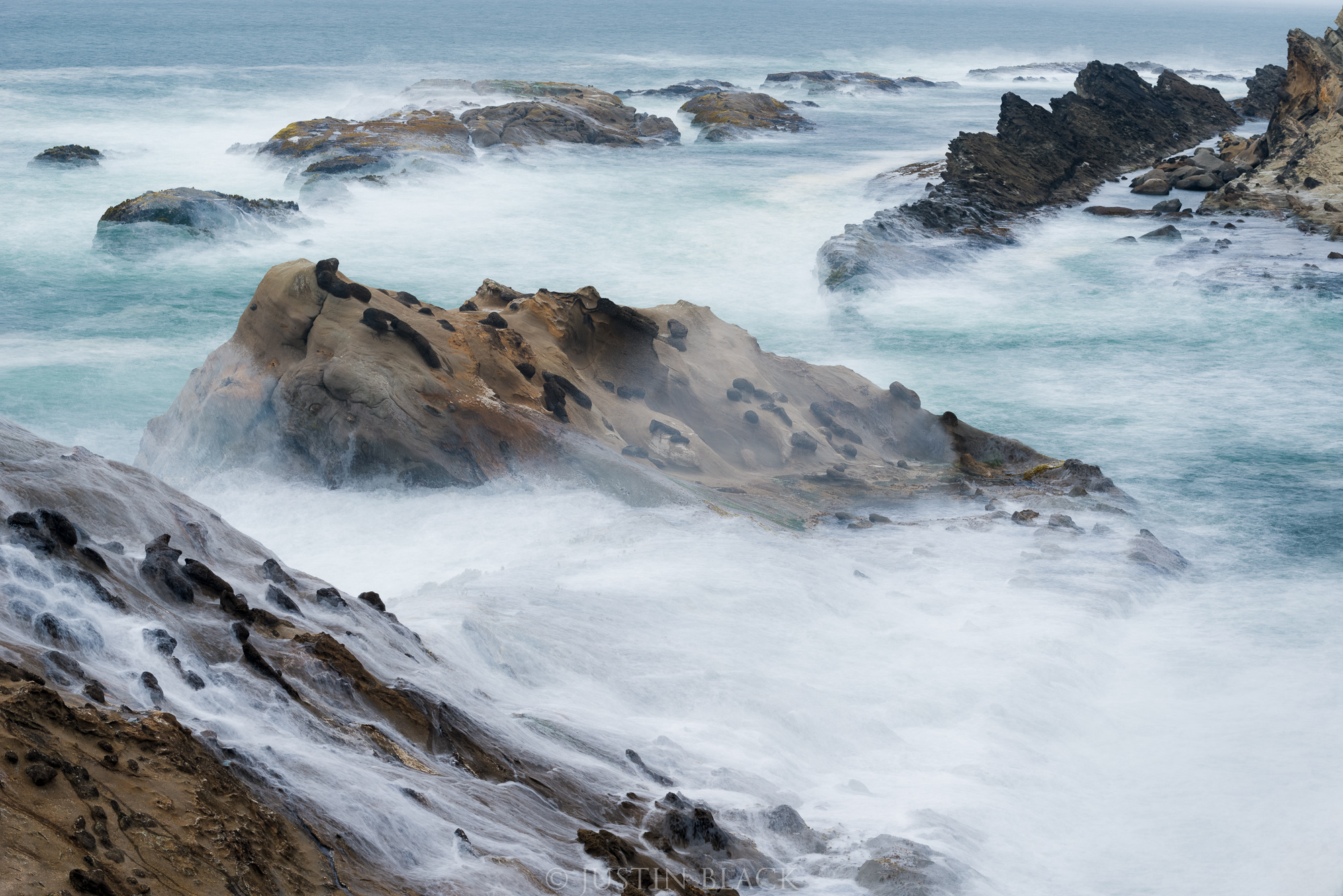
The Oregon Coast is a prime area for honing your long exposure skills.
Whether it’s blurring the movement of clouds as they roll towards the coast or creating ethereal shots of waves crashing on a rocky shoreline, there are ample opportunities to include indicated movement in your photos.
When creating long exposure images, it’s important to have static elements - like the rocks in the image above - that contrast with the movement in the shot.
Additionally, don’t be afraid to get in close for a tightly-framed shot. Doing so allows you to create a more intimate photo that puts movement on full display.
How to Make the Most of Photographing the Oregon Coast
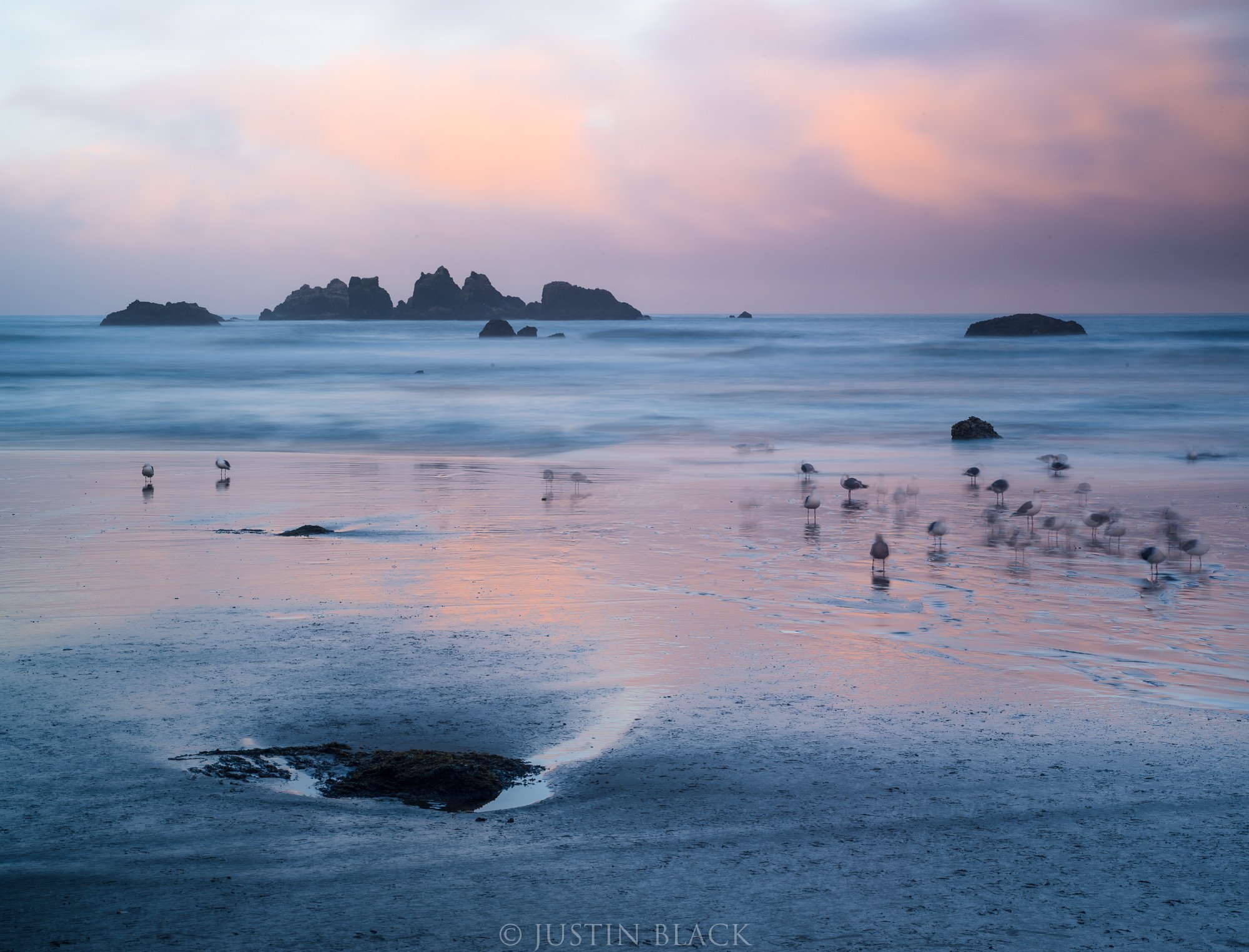
There are many resources you can utilize to plan a photography trip to the Oregon Coast, like those linked at the bottom of this article.
But why spend all your time trying to figure out where to go and what to see when you can leave the planning to the experts and explore this area as part of a photography workshop?
Visionary Wild’s Oregon Coast Workshop comes immediately to mind as being a prime candidate.
With master photographers Jack Dykinga, John Shaw, and Justin Black at the helm, you’ll be guided to locations up and down the Oregon Coast where you can develop your skills behind the lens.
From the “base camp” in Bandon, you’ll head out each morning and evening for photo sessions on the coast. In the context of the small group, you’ll take part in advanced instruction on key photography topics.
Of course, it helps that all this learning takes place in one of the most beautiful areas in the world!
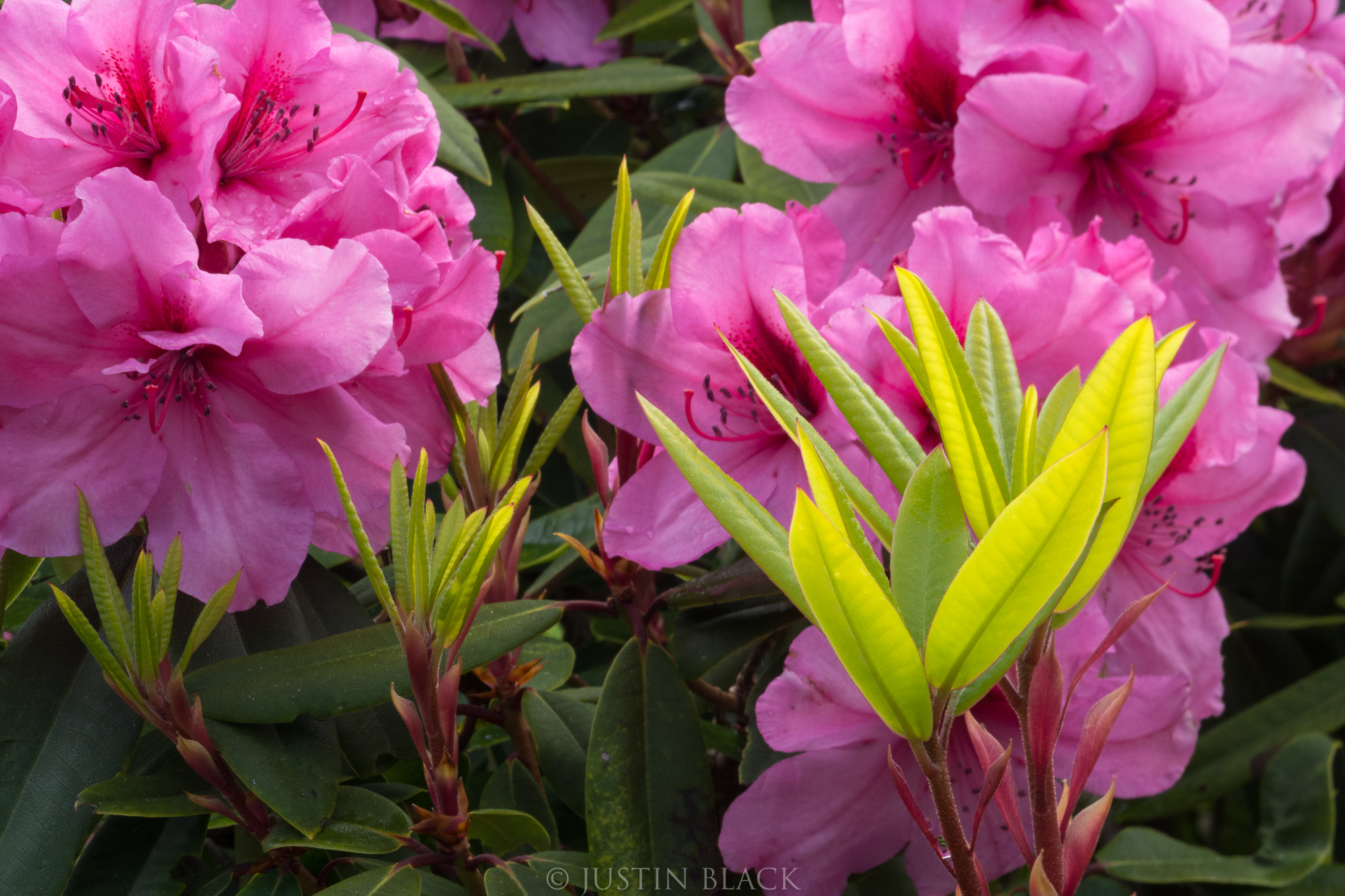
When you’re not out exploring with the group and getting one-on-one time with the workshop instructors in the field, you’ll come together at the hotel to take part in presentations on composition, light, creativity, and digital workflow.
Likewise, time is set aside for image critiques so you can get feedback and support from the group and workshop leaders.
In that regard, Visionary Wild’s photography workshops are much more than showing you the sights. Instead, this workshop is all about seeing, learning, developing new skills, and becoming a better photographer.
All you have to do is get yourself there and get yourself home after the workshop is completed. While you’re there, lodging, food, and transportation are taken care of.
What could be better than enhancing your photography skills under the close tutelage of expert photographers in a breathtaking location?!
Learn more about Visionary Wild
Planning Your Oregon Coast Photography Trip
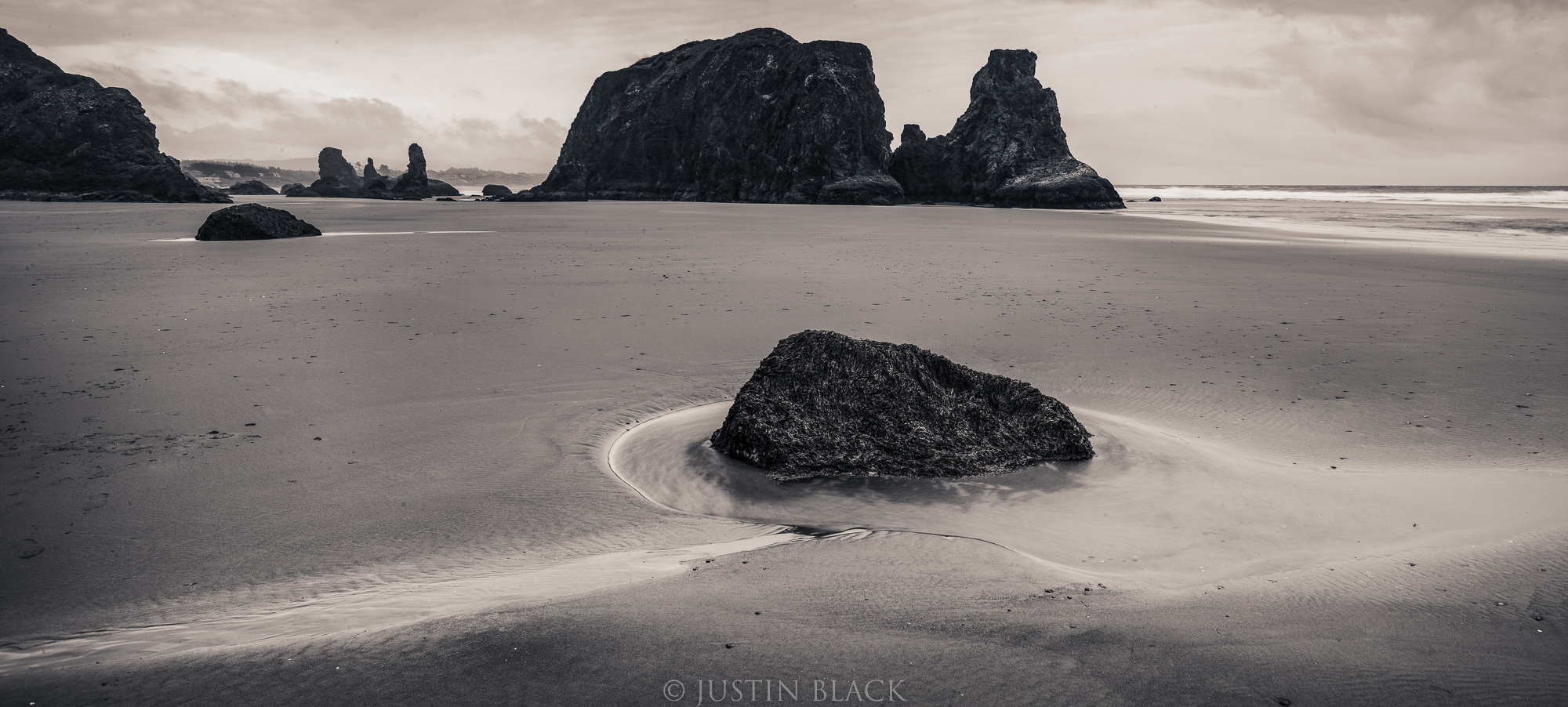
- Where to Stay: Best Western Inn at Face Rock in Bandon is an affordable hotel on the southern end of the Oregon Coast. The hotel is set on a gorgeous seven-acre lot right on the ocean and is just minutes away from dozens of activities and attractions.
- Where to Eat: Edgewaters gets rave reviews for its fresh seafood and local cuisine. The view of the water isn’t bad either!
- Must-See Attractions: Charleston Harbor, numerous lighthouses that dot the coast, and Bandon Beach should top your list of things to see while you’re traveling the Oregon Coast.
- Best luggage: For a trip of this length, the Nomatic Check-In roller bag is the ideal choice. It offers polycarbonate construction that stands up to the rigors of travel, silent wheels, low-profile handles, and a three-stage aluminum handle to fit your height. With space for 78 liters of gear, this bag has plenty of room for a 5-day trip or longer.
- Check the weather on the Oregon Coast right now.
